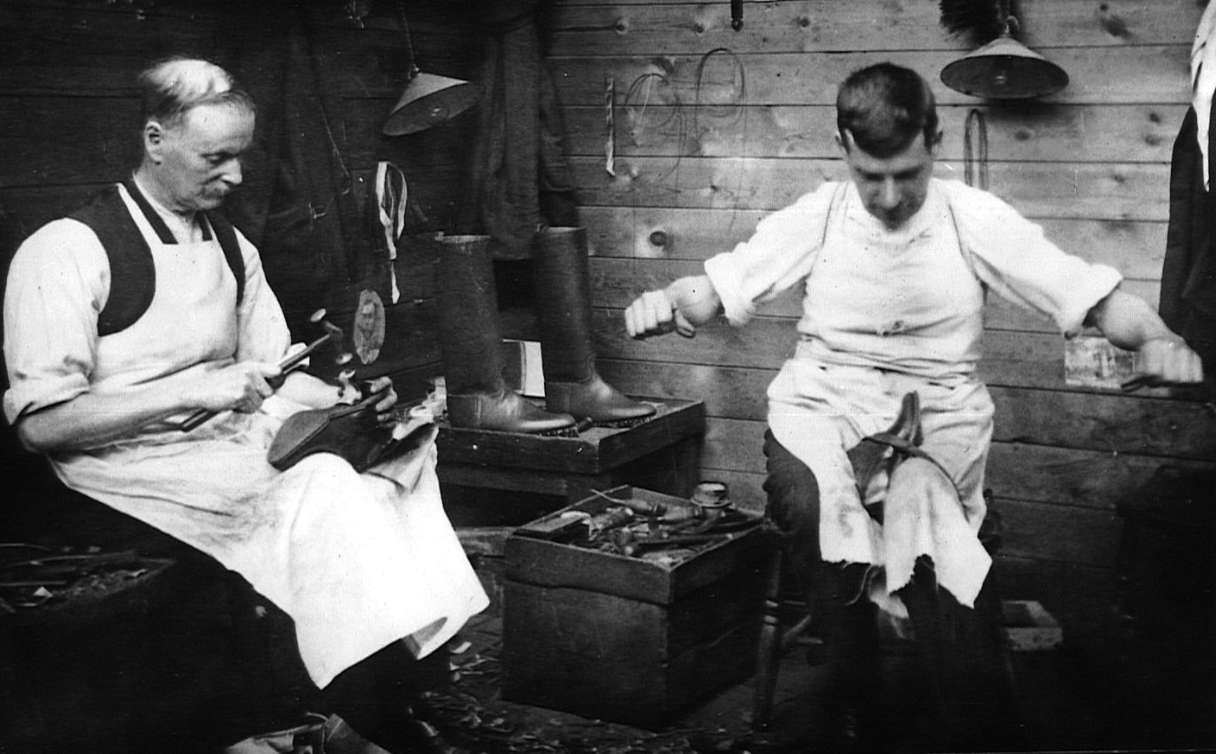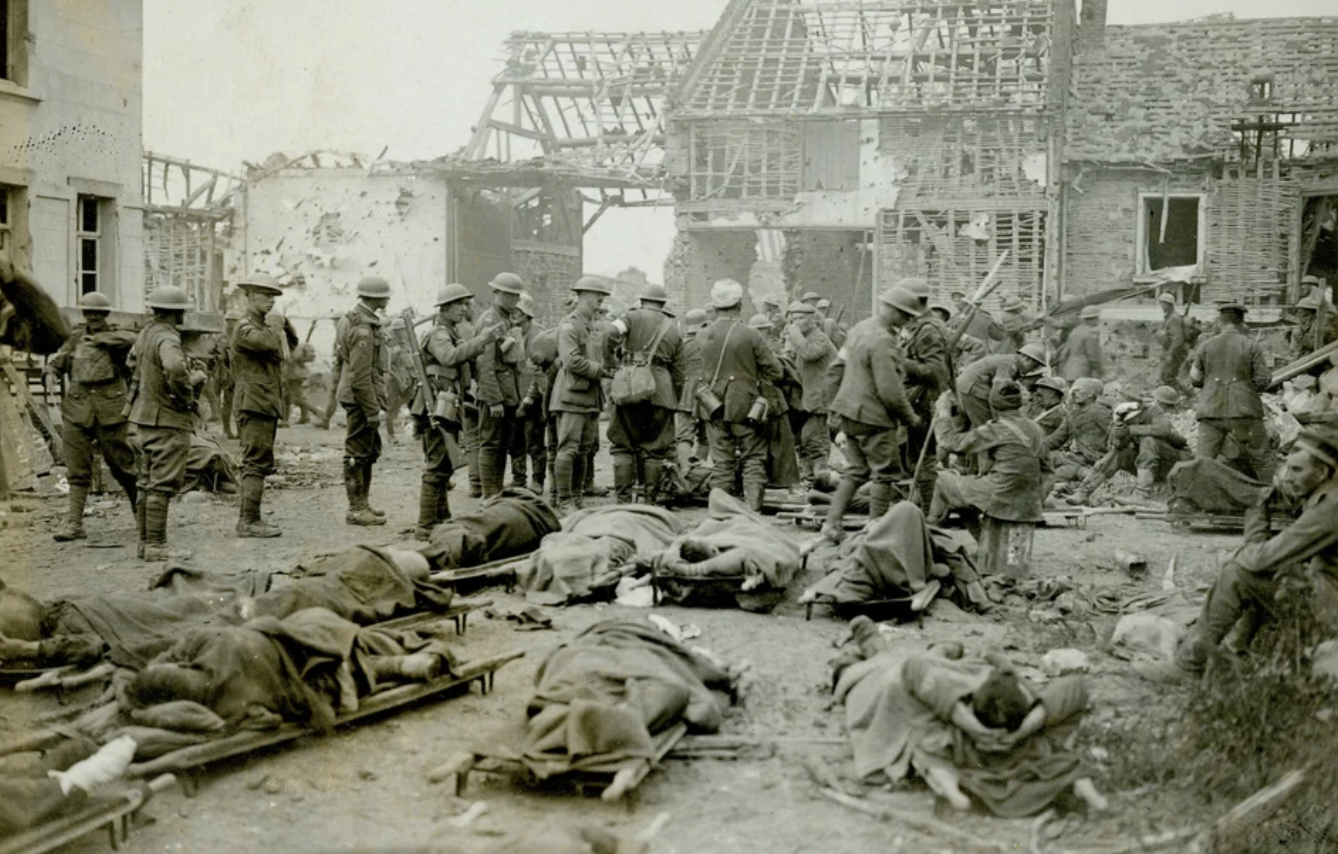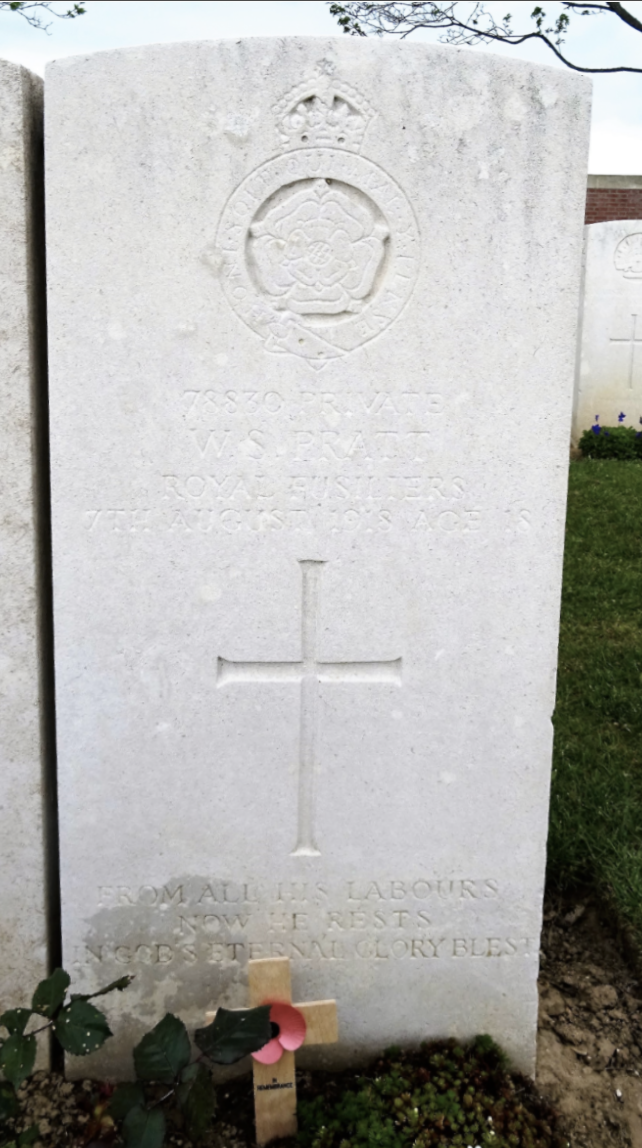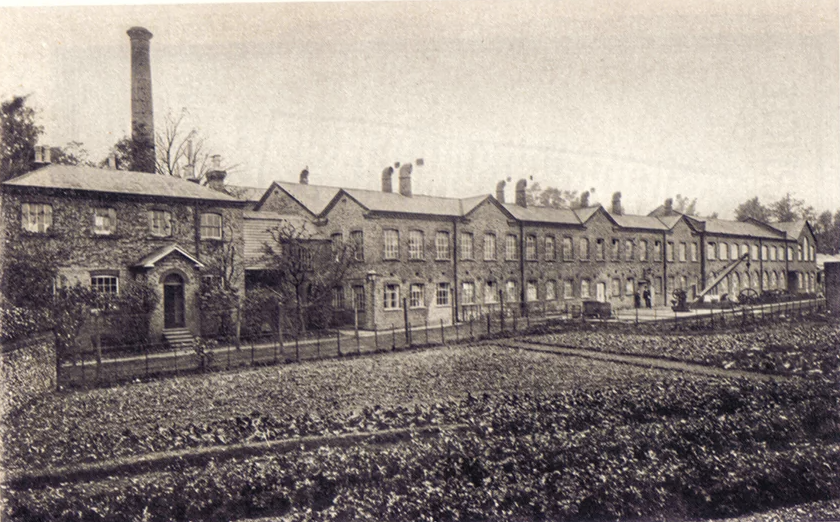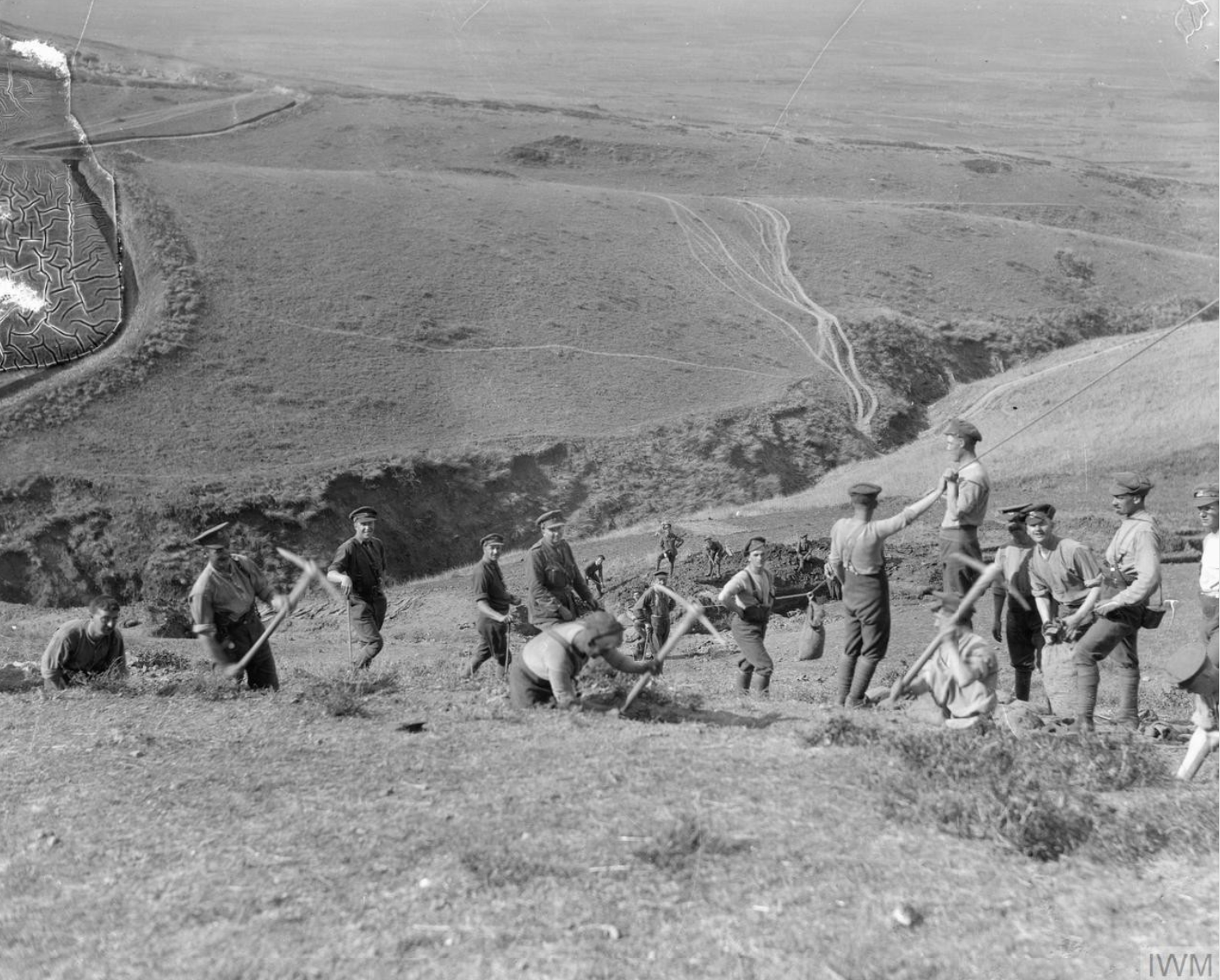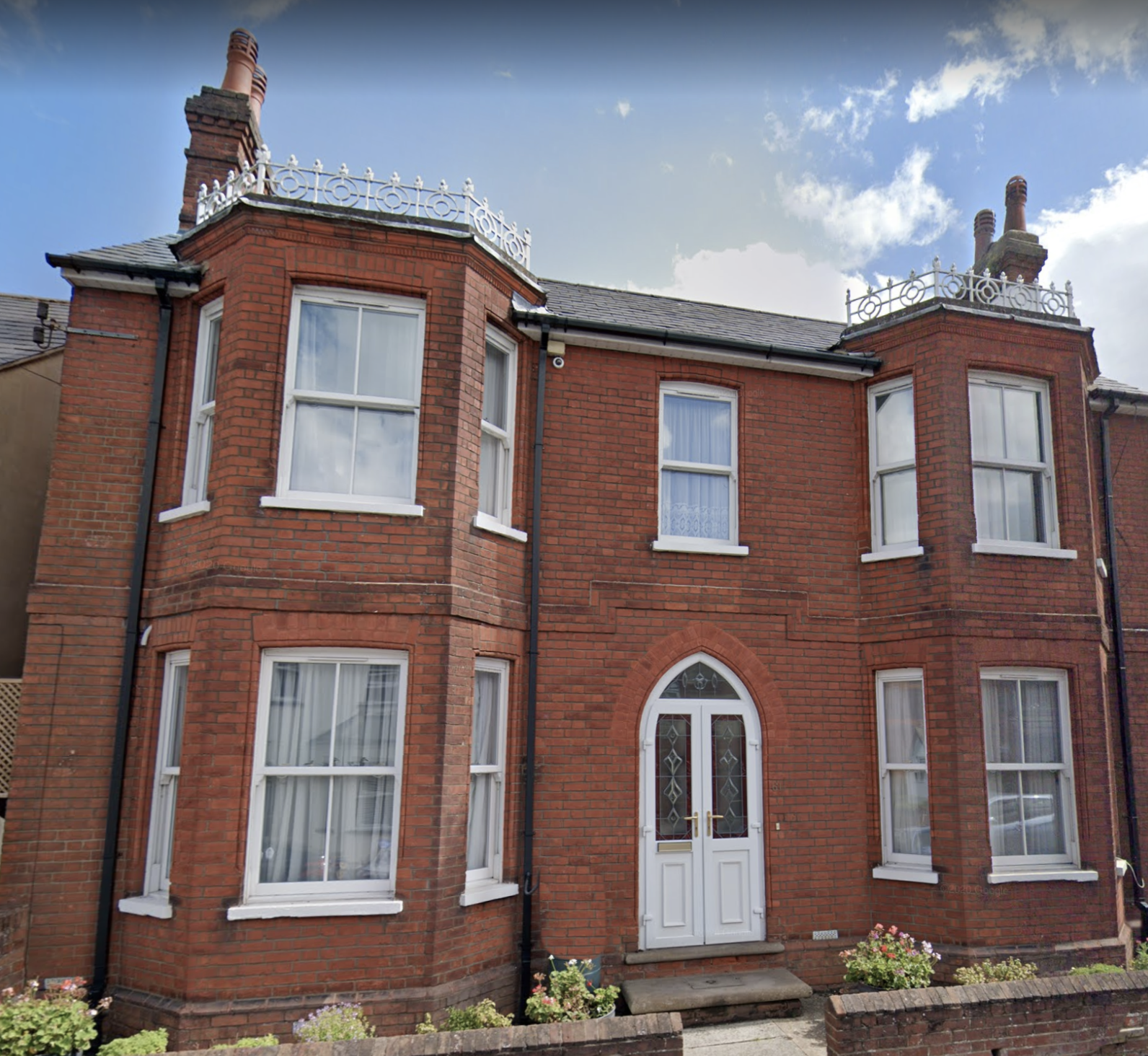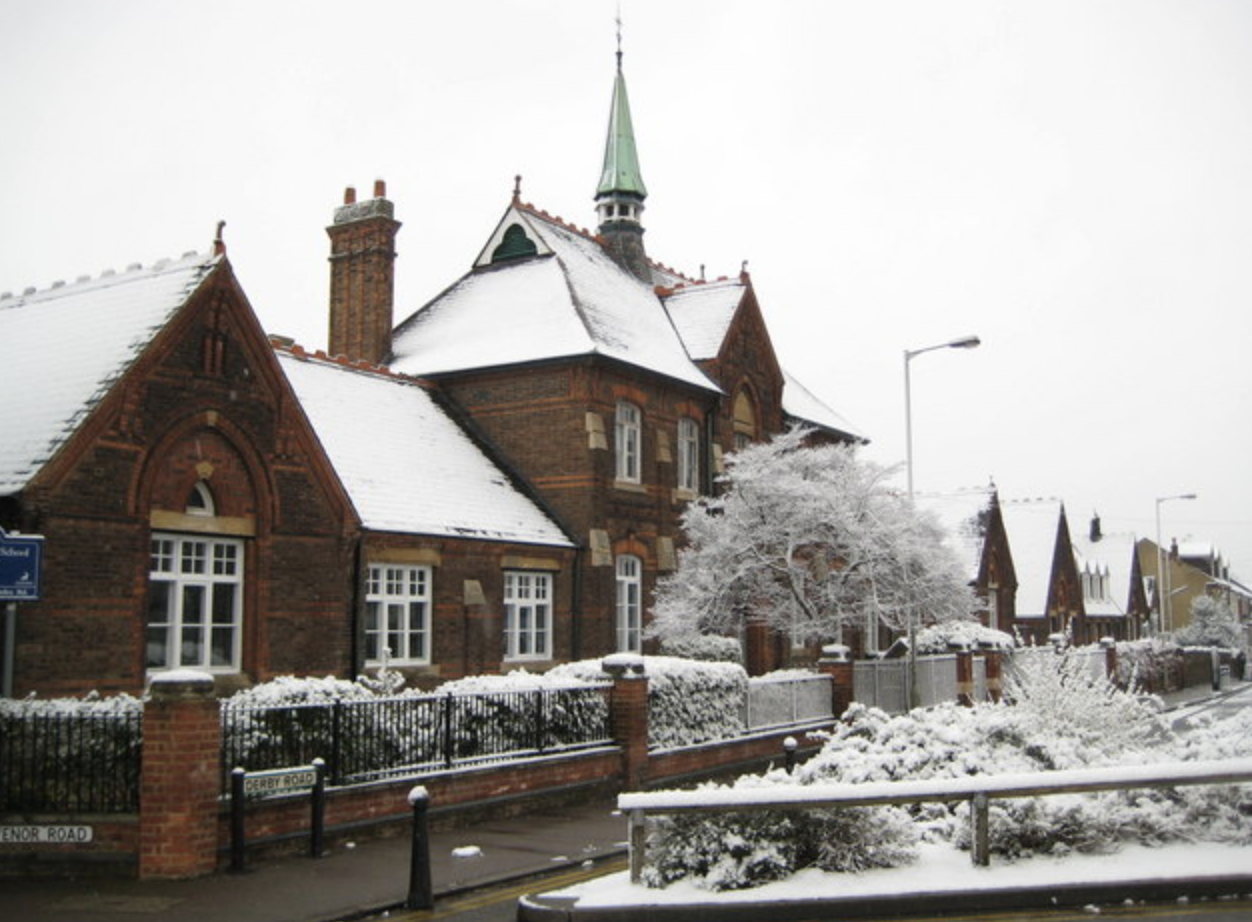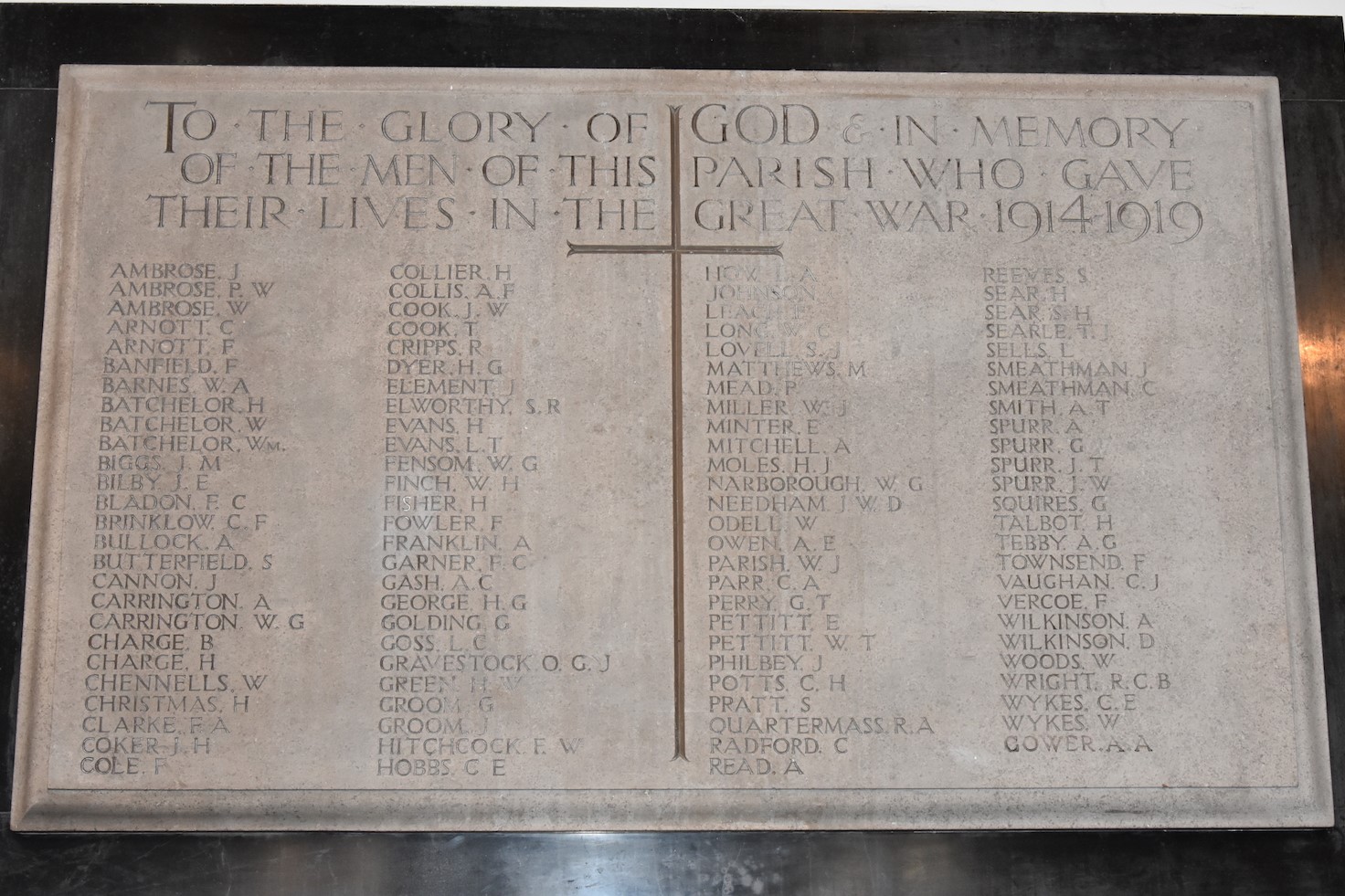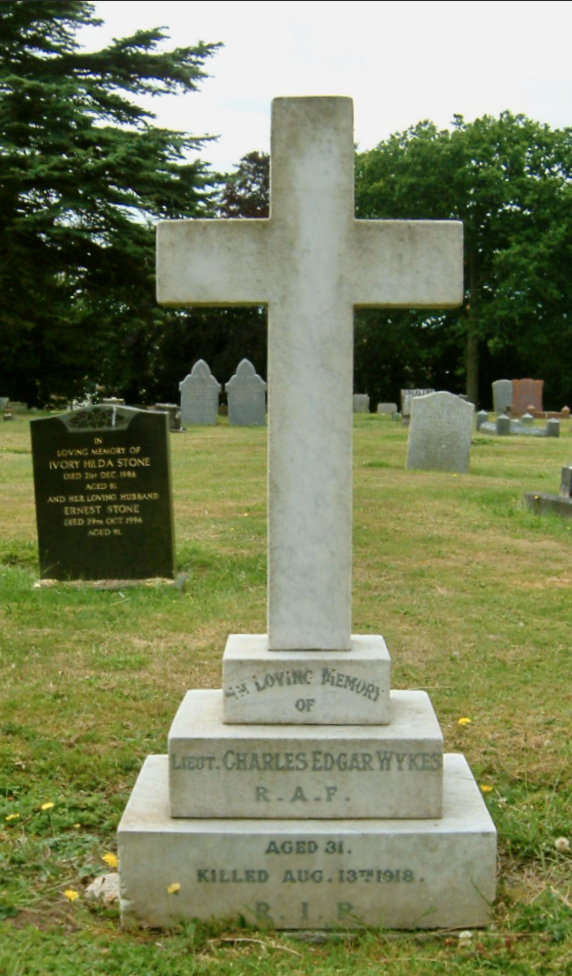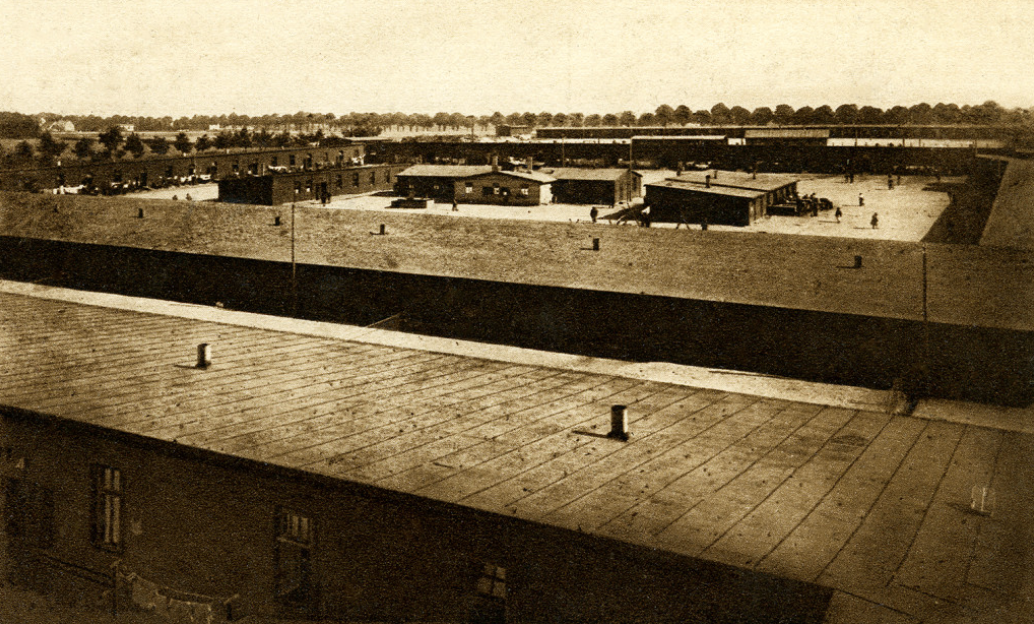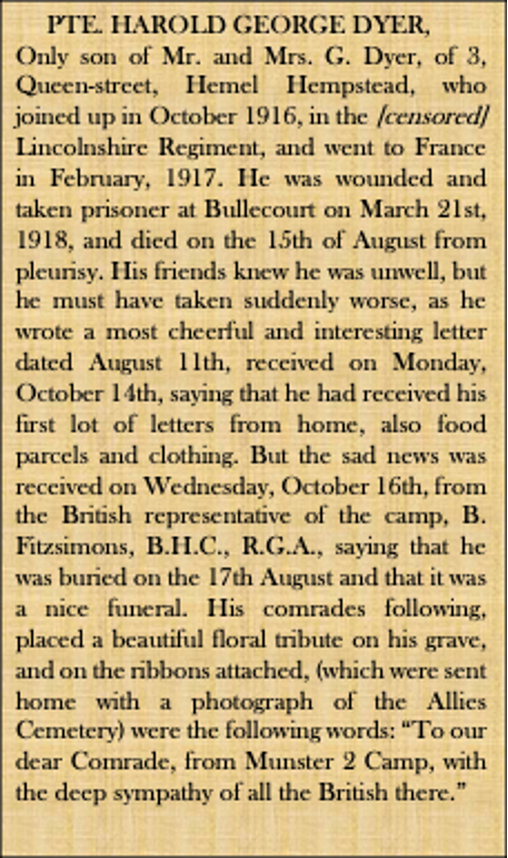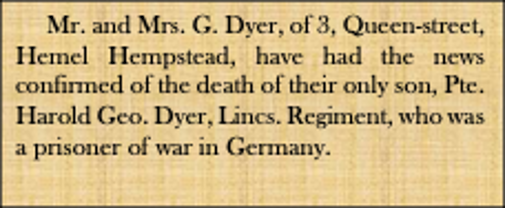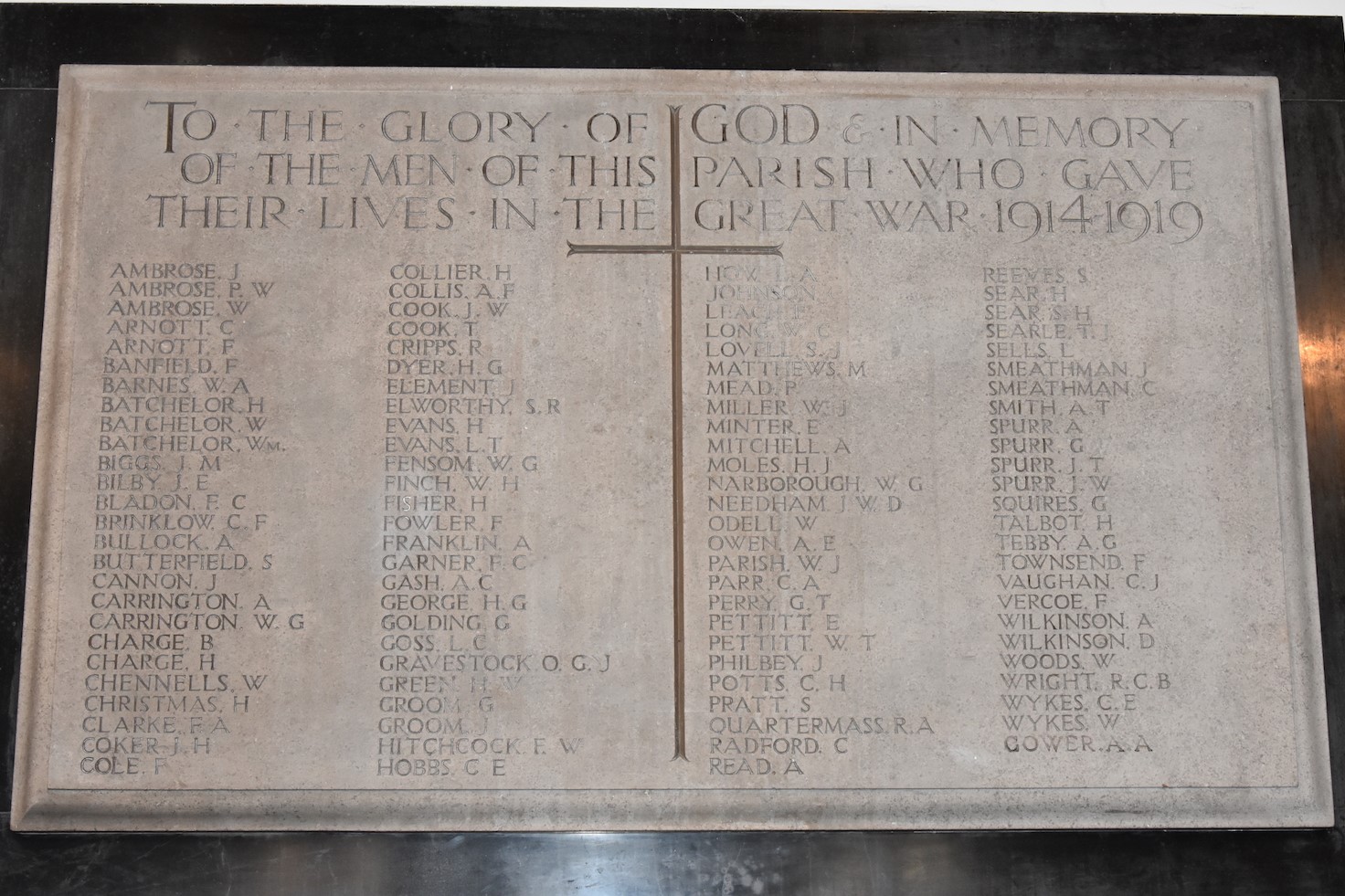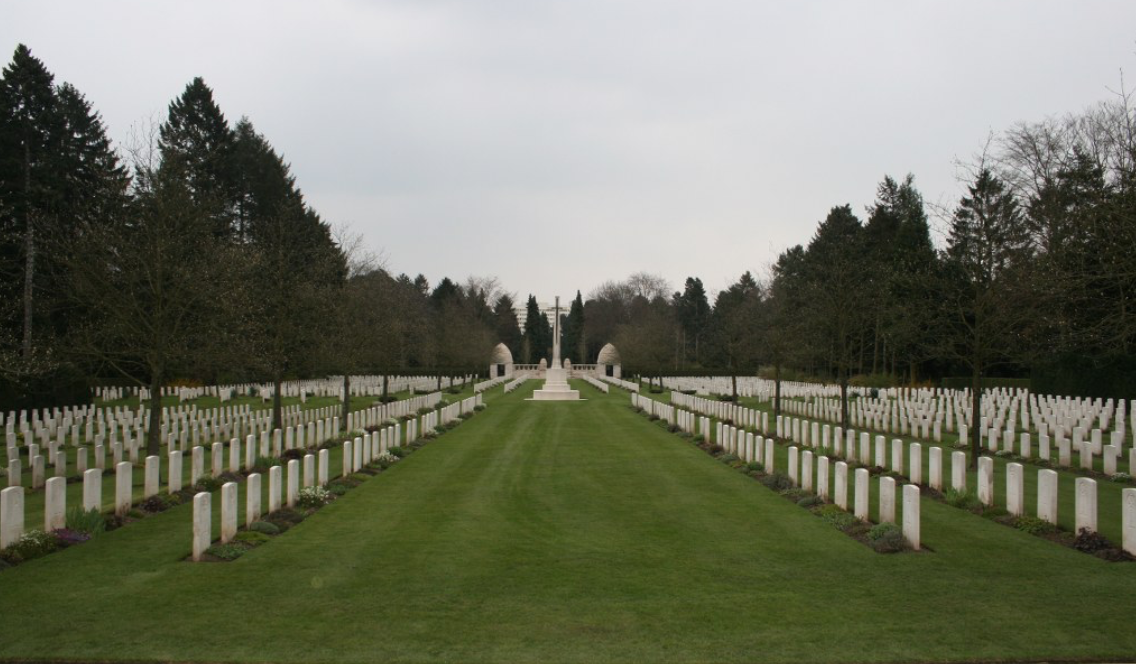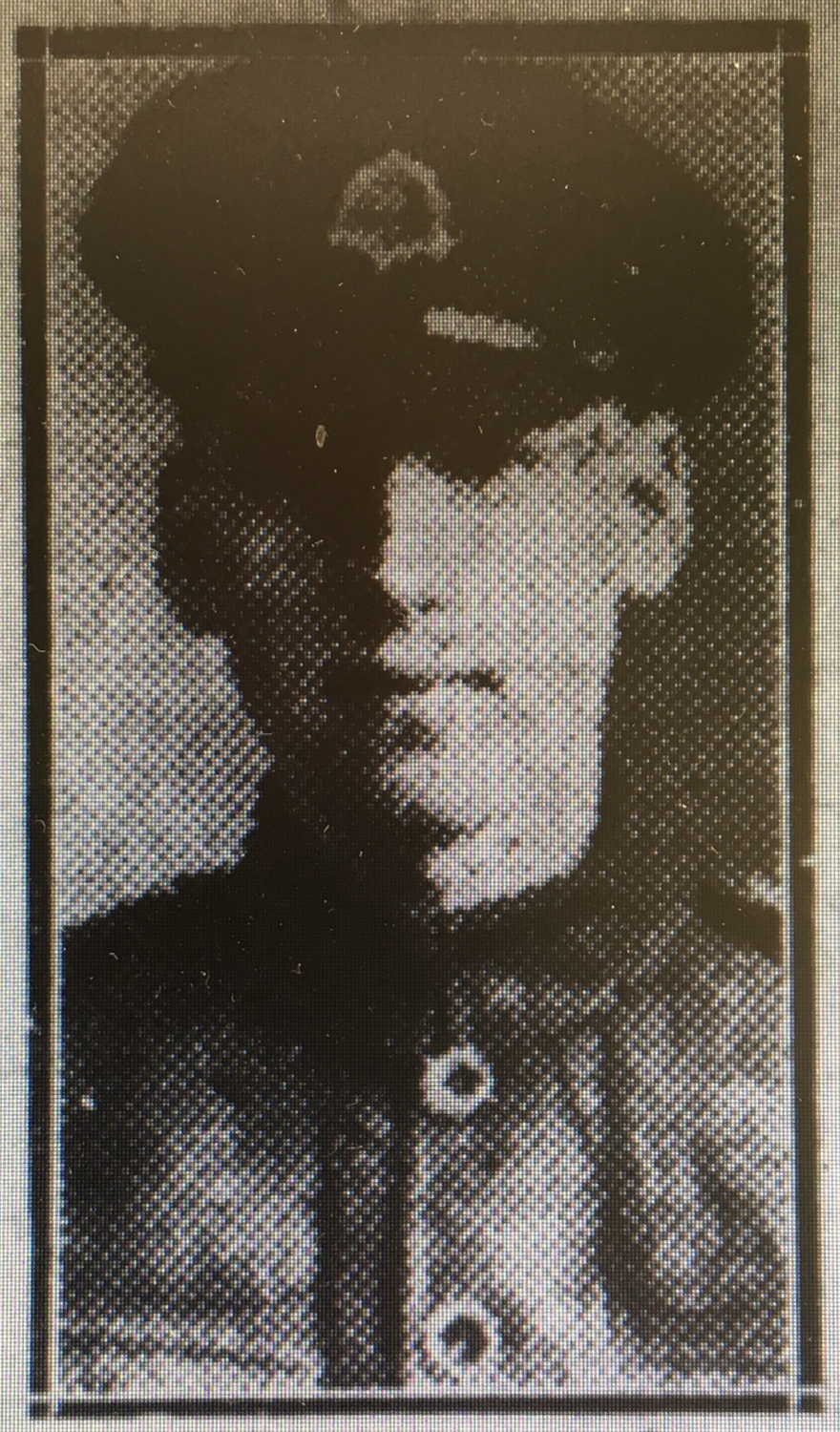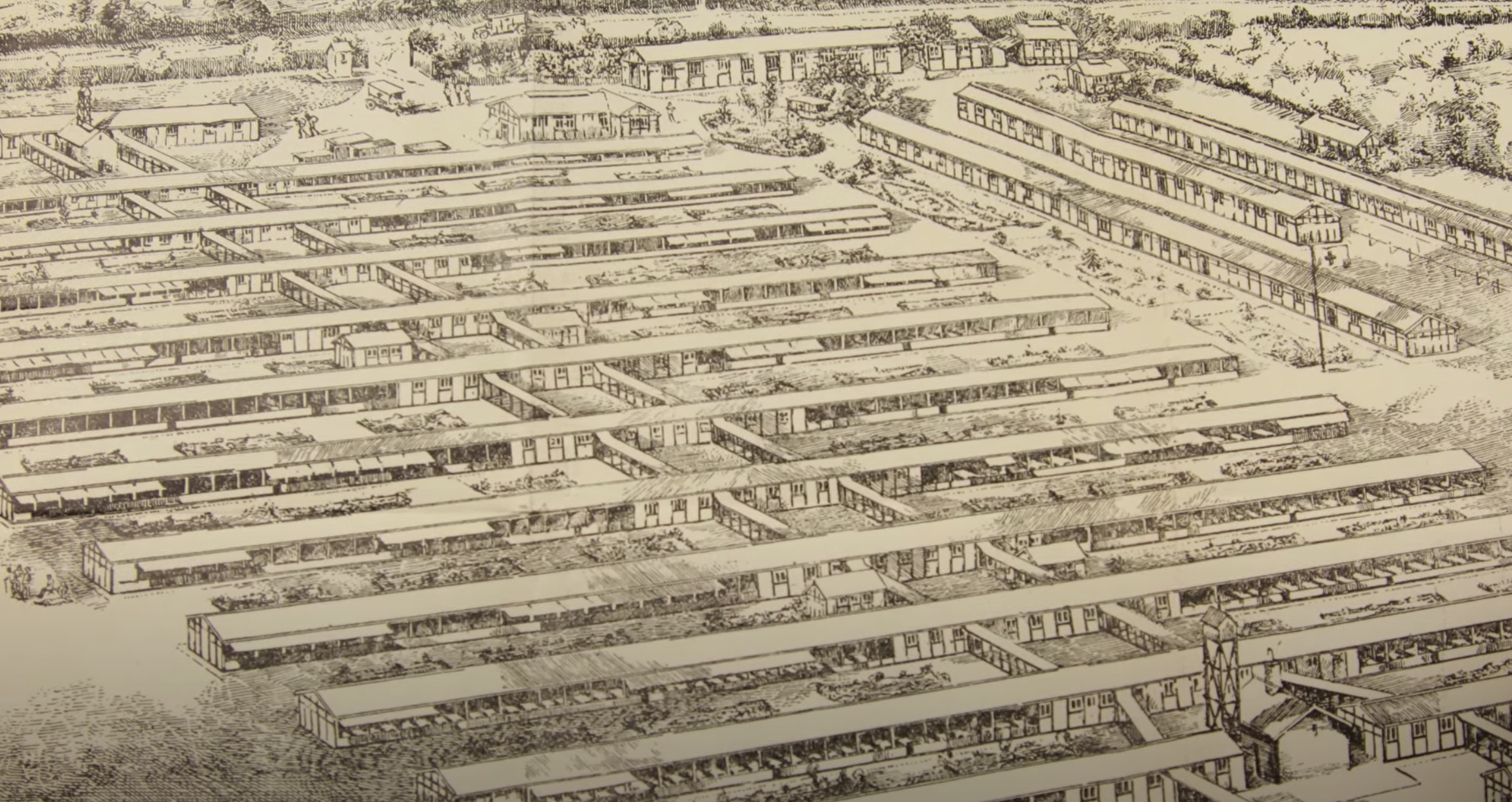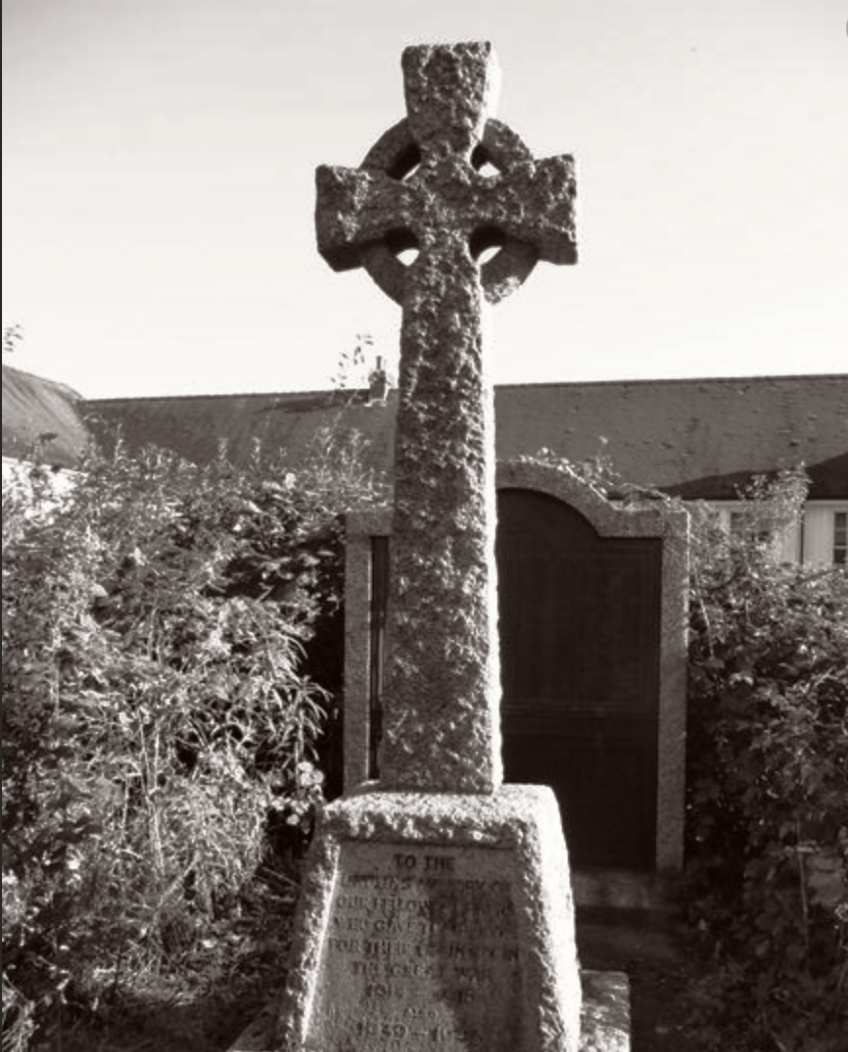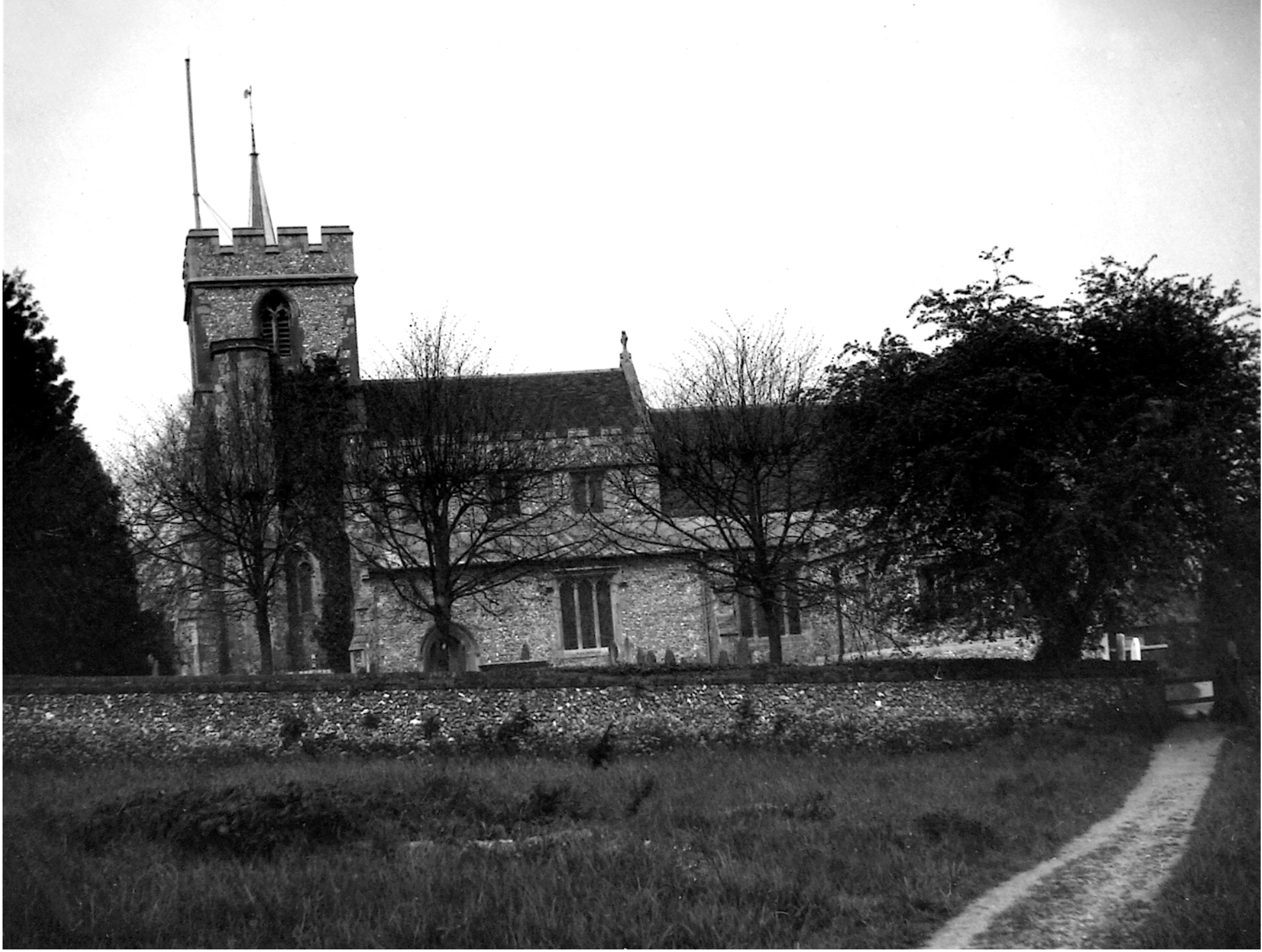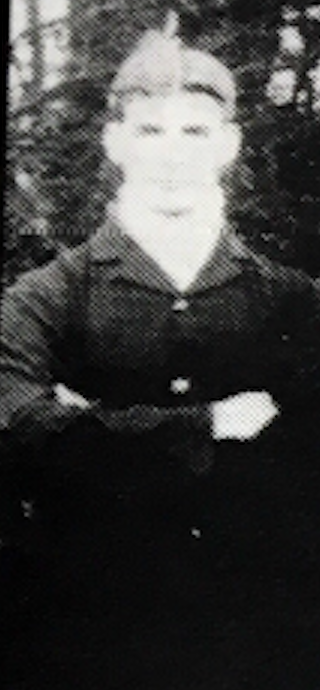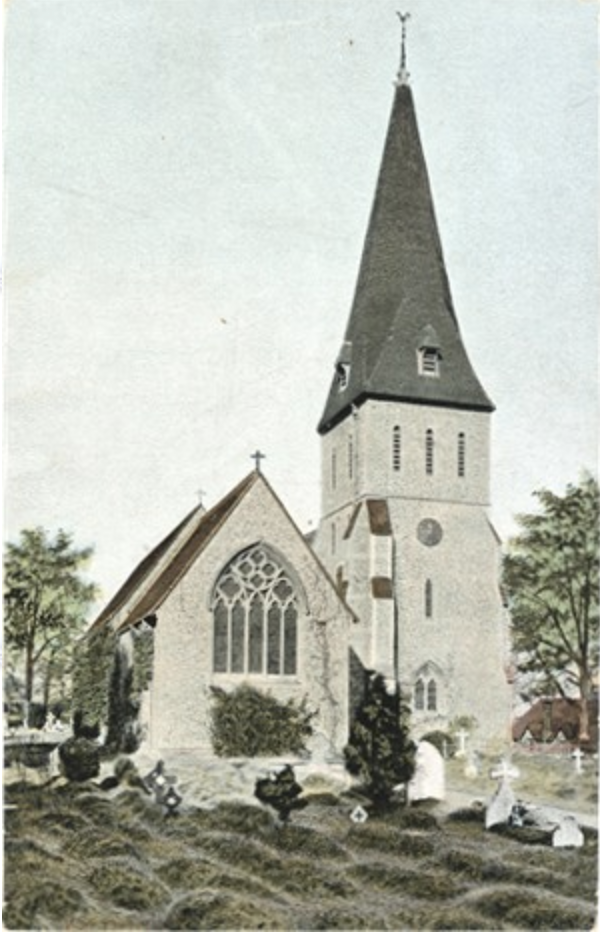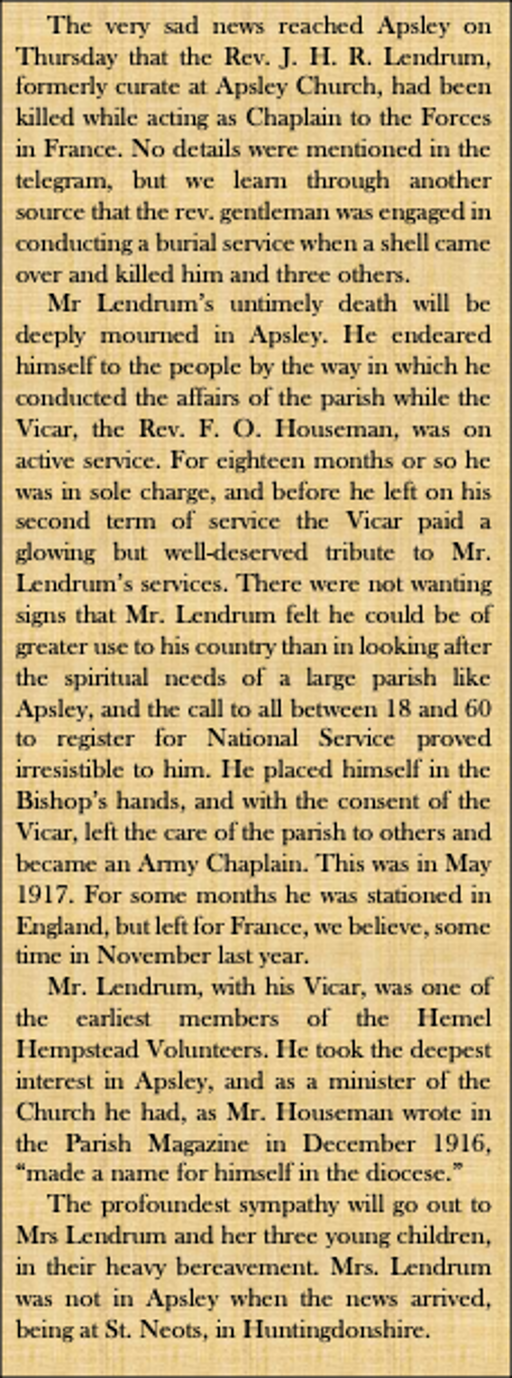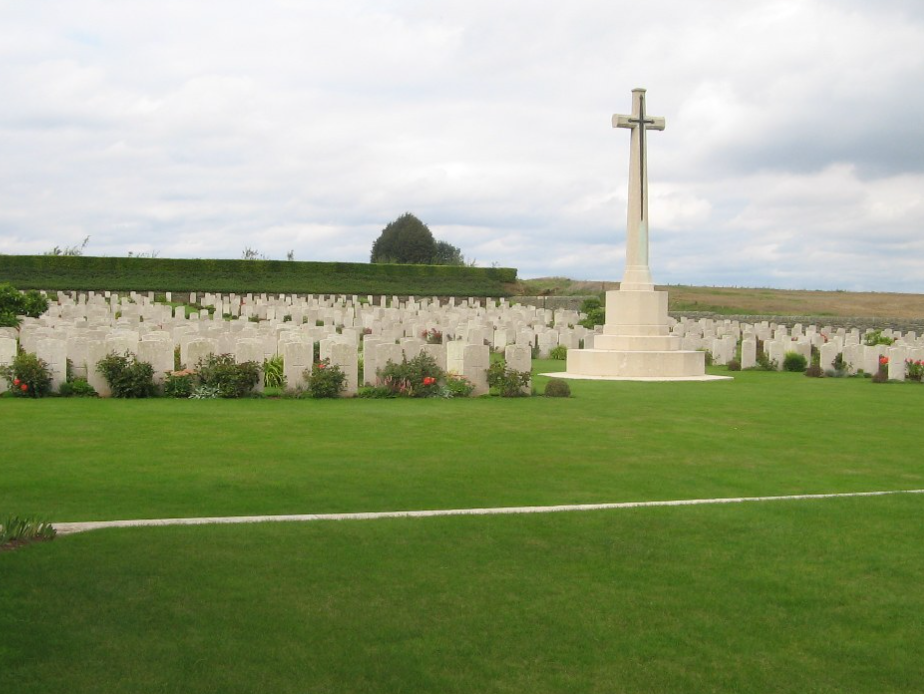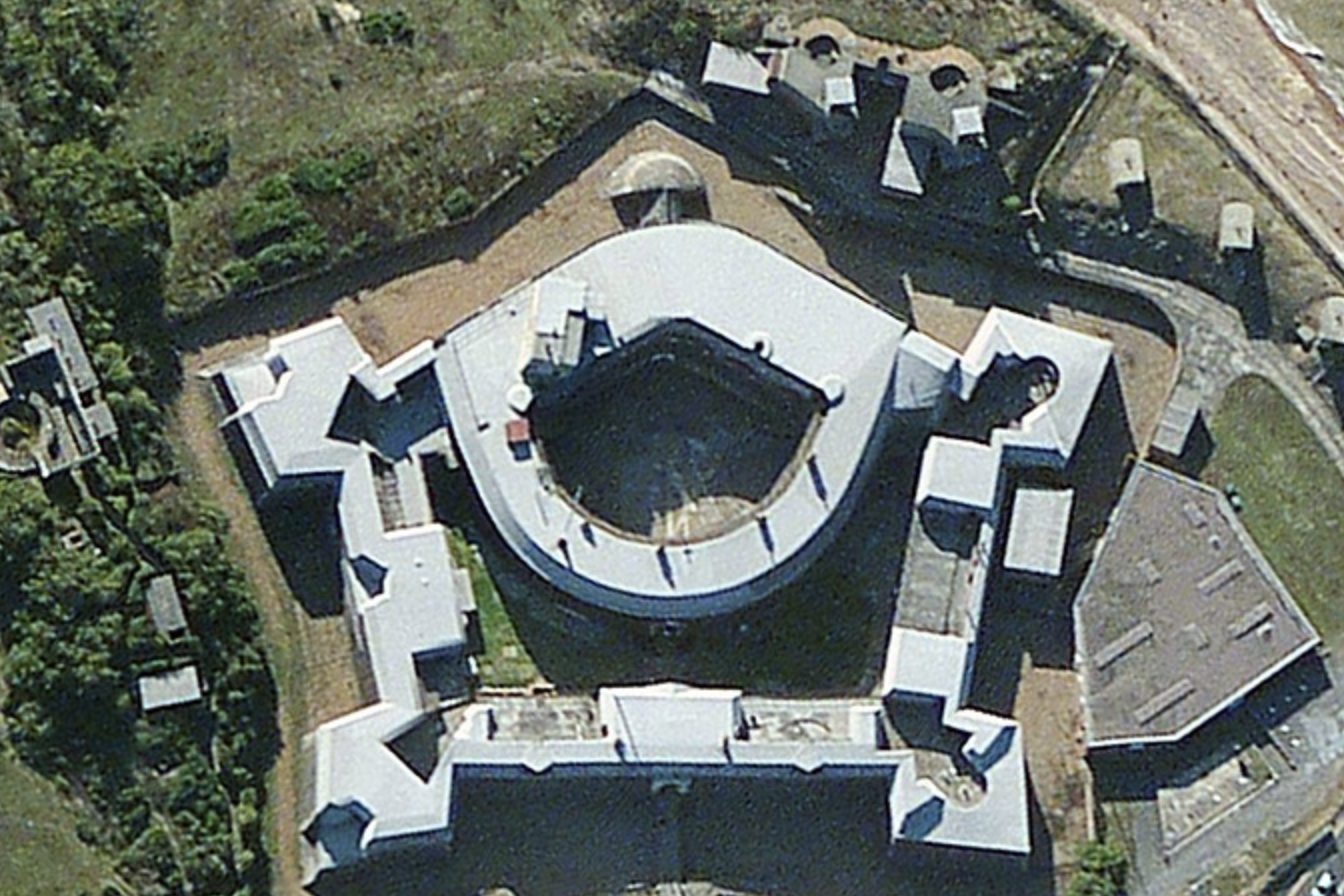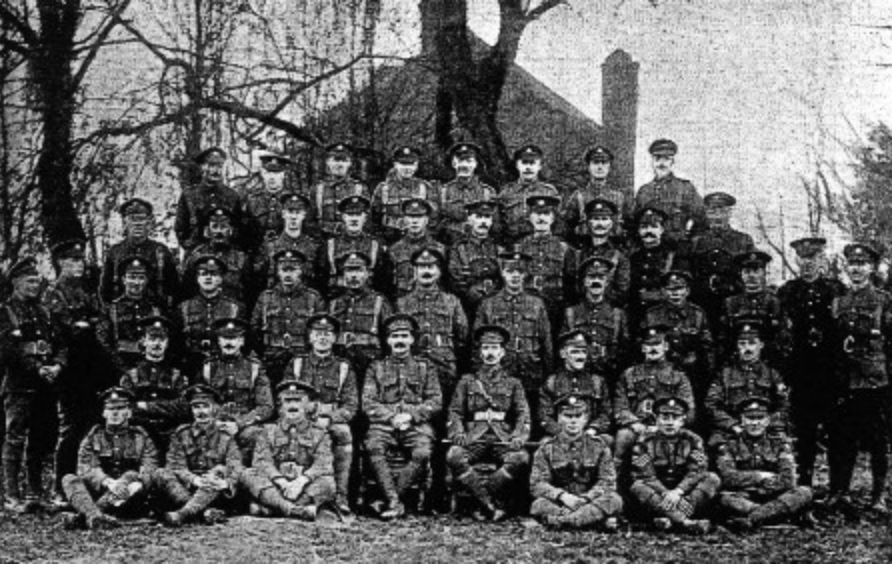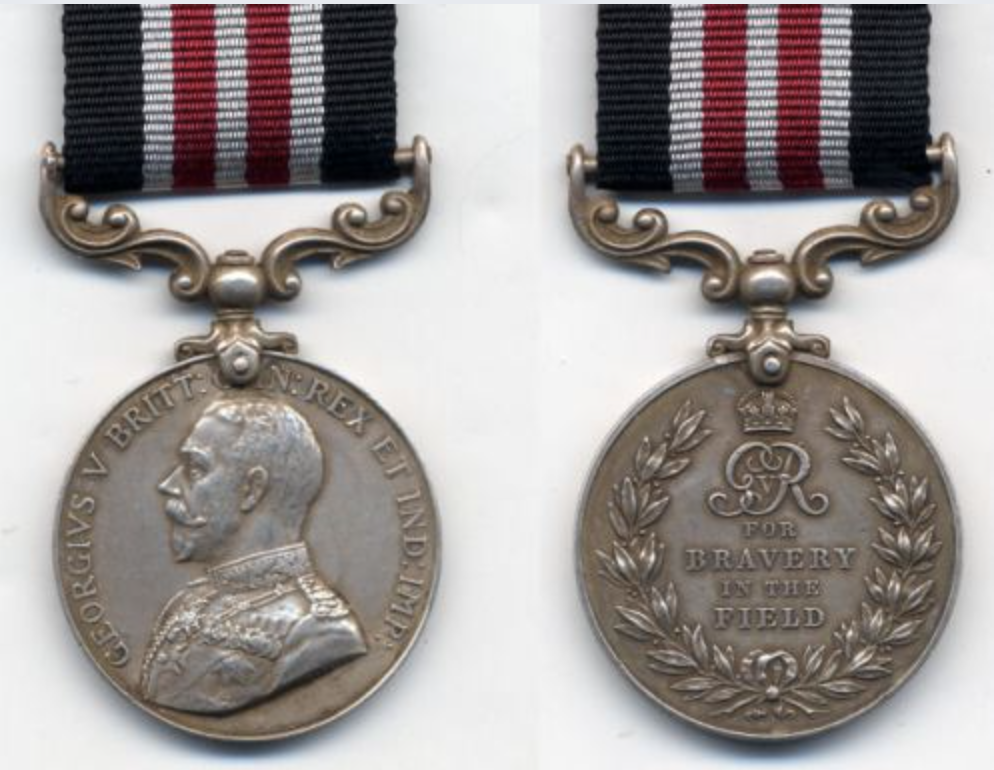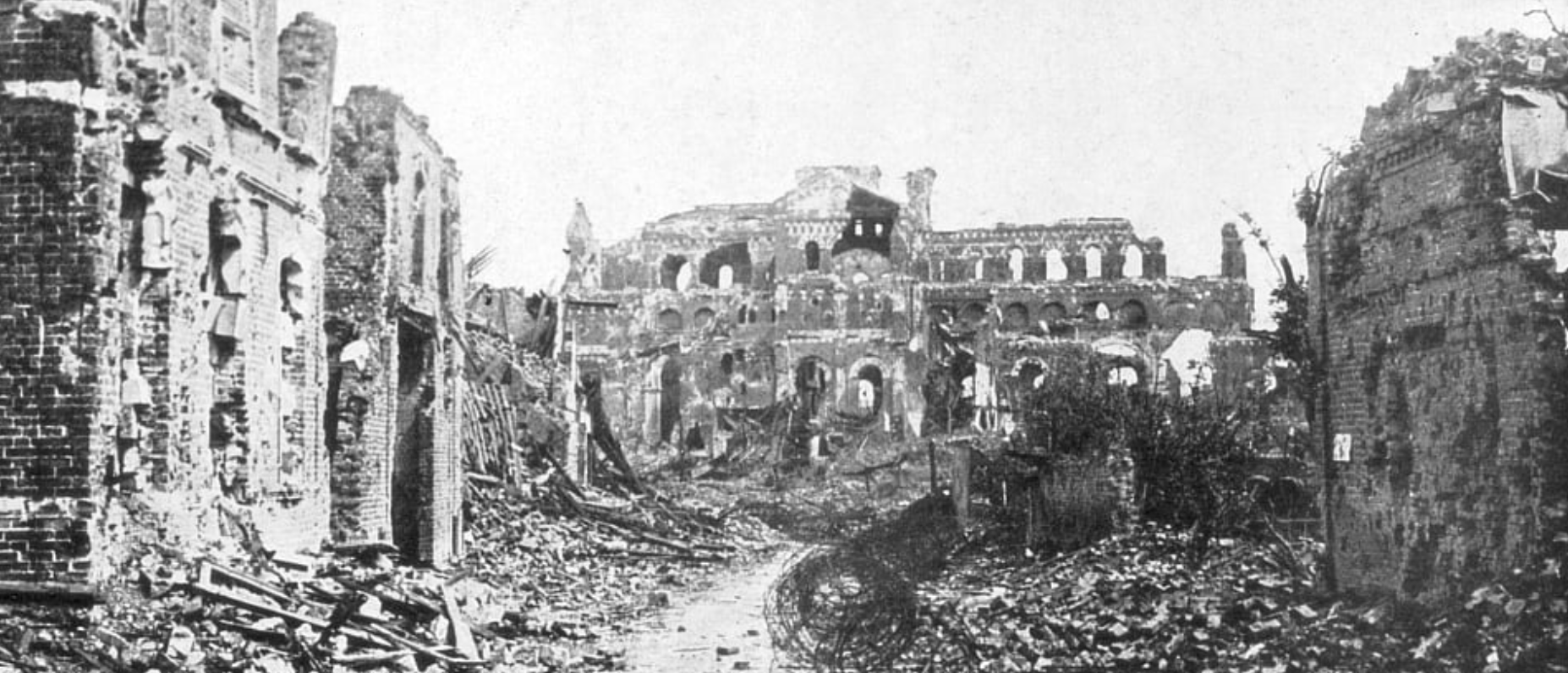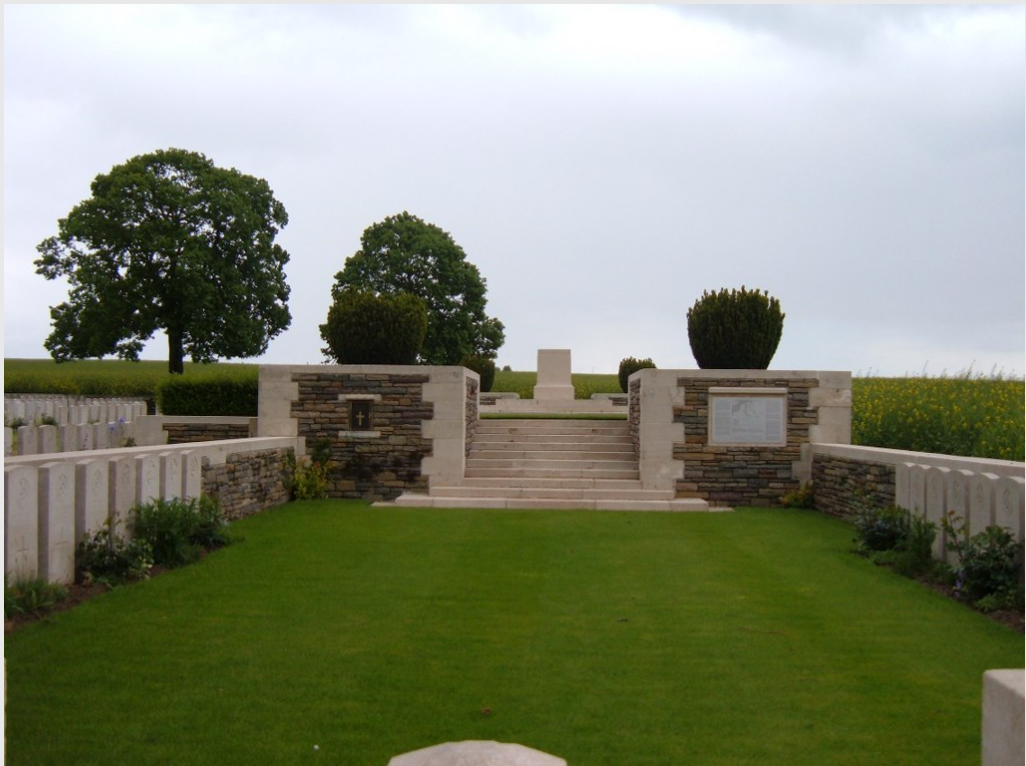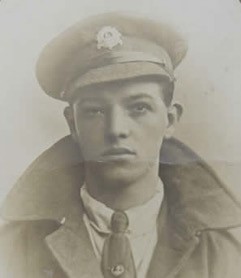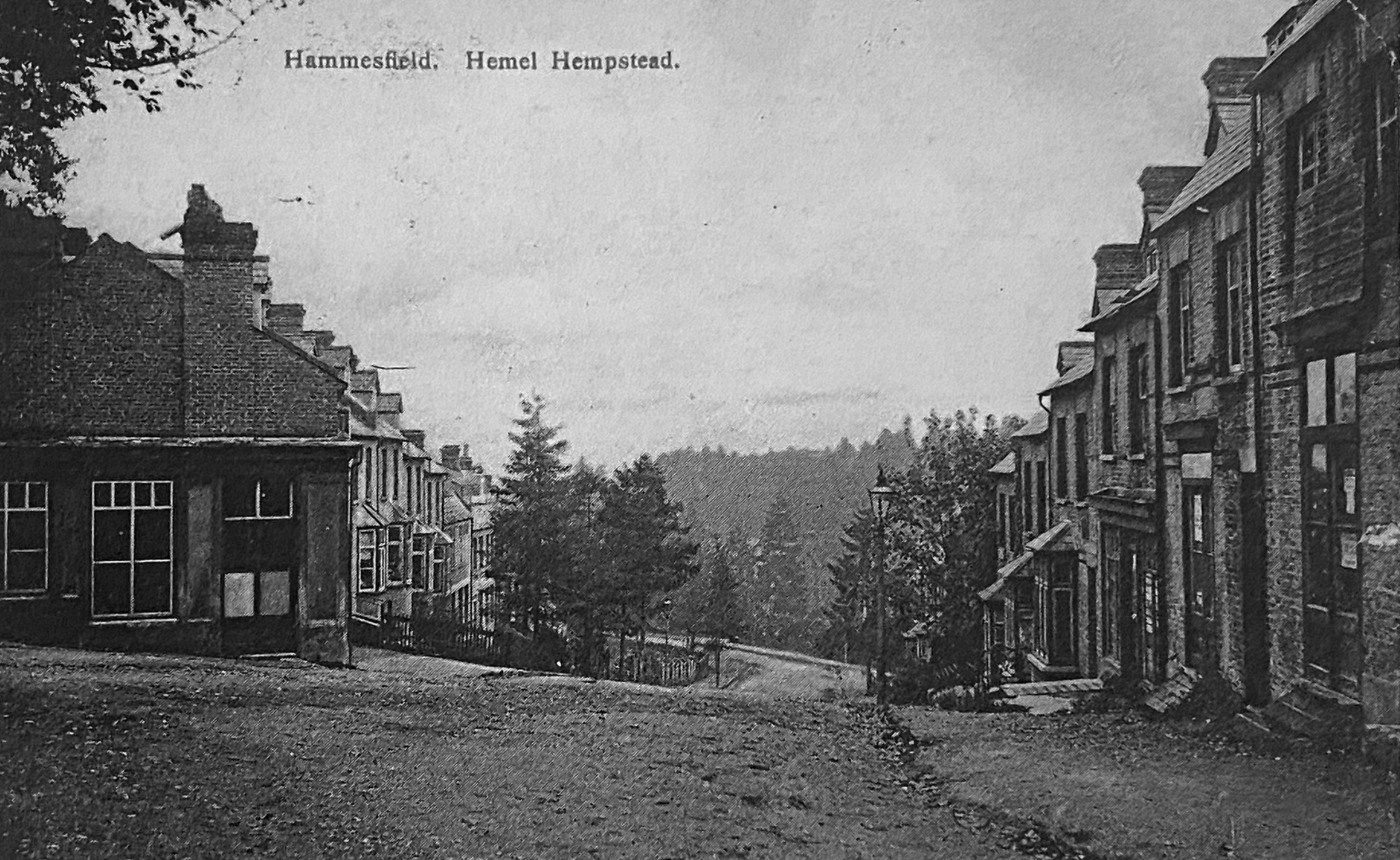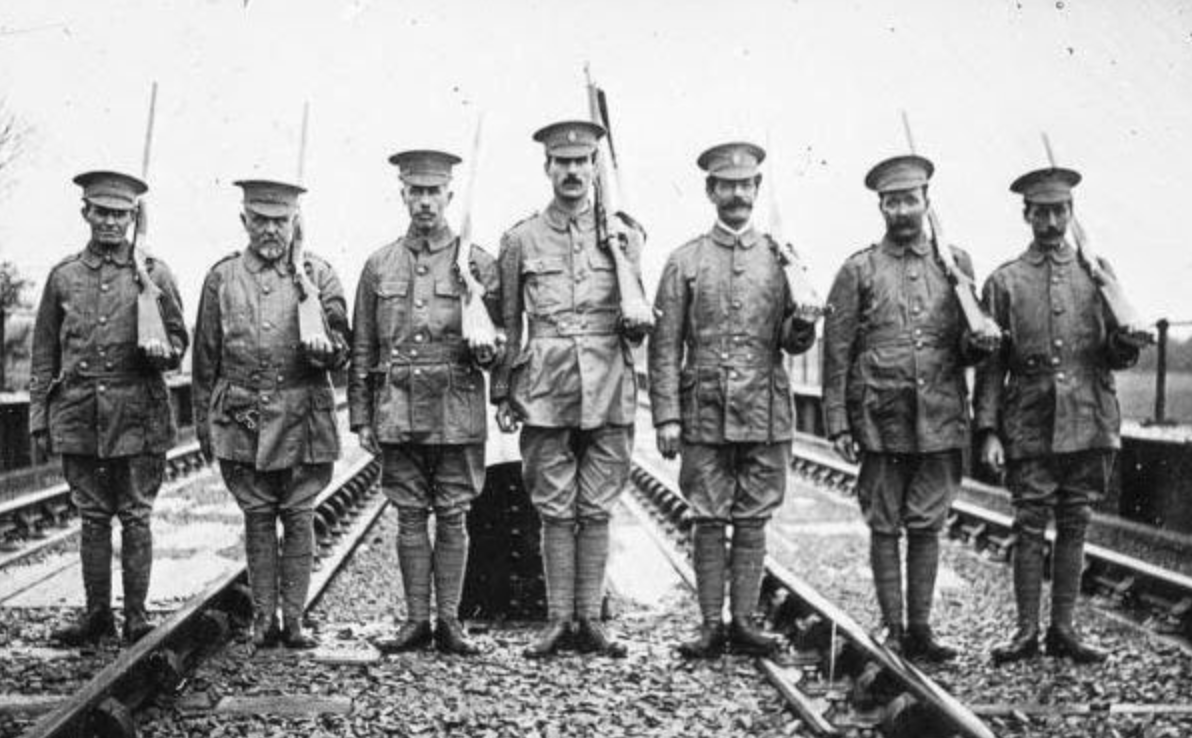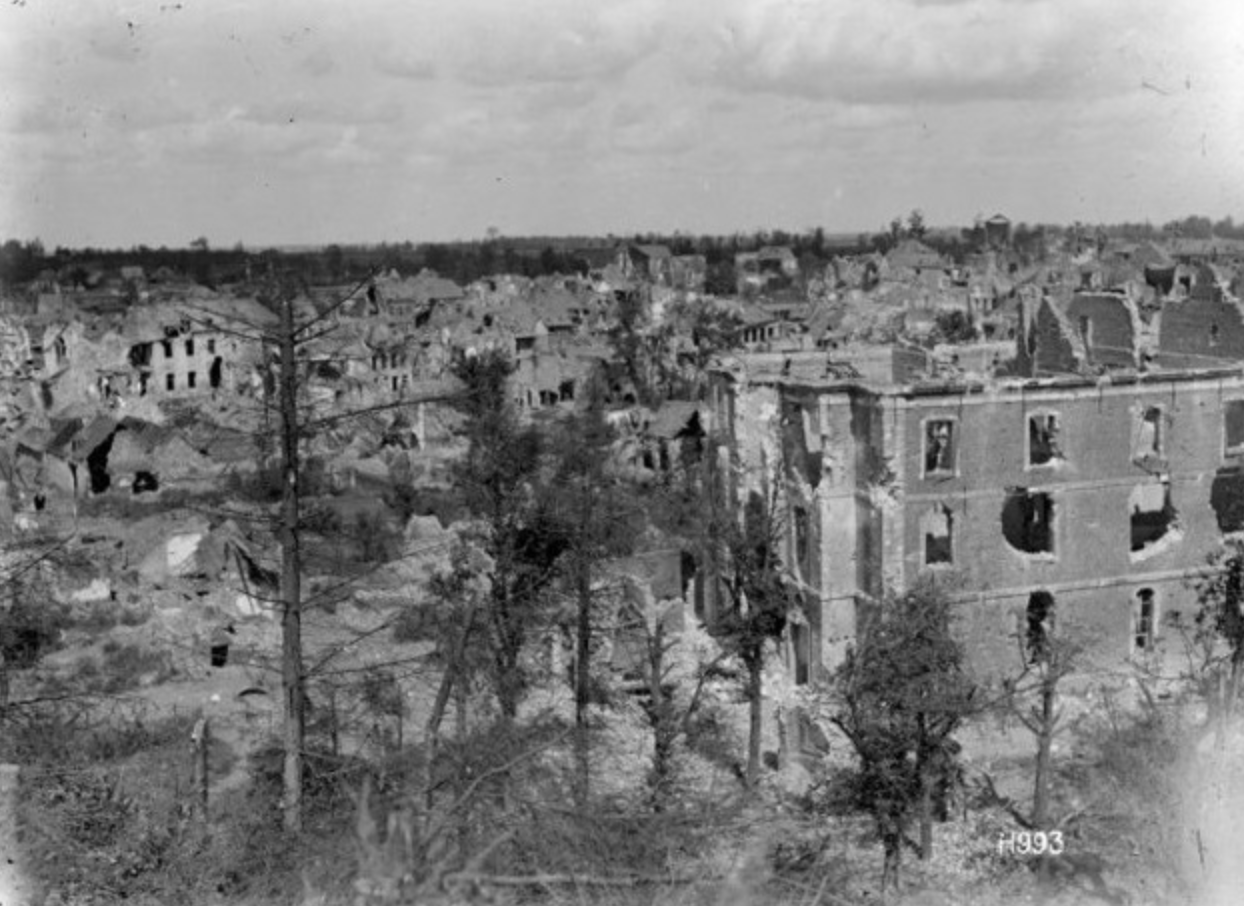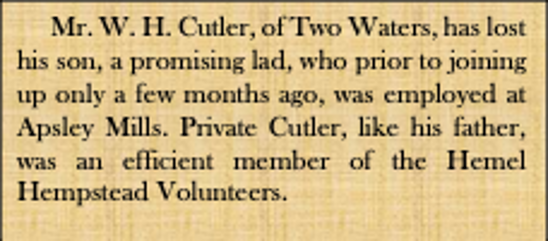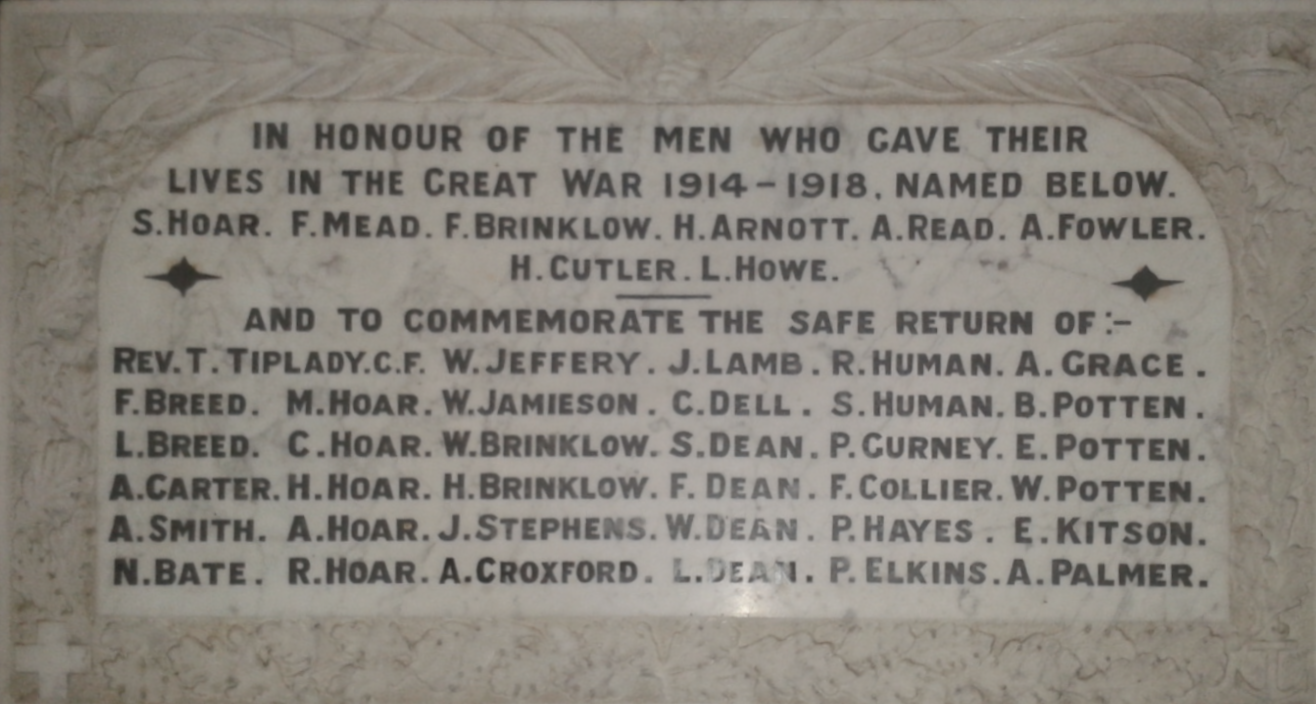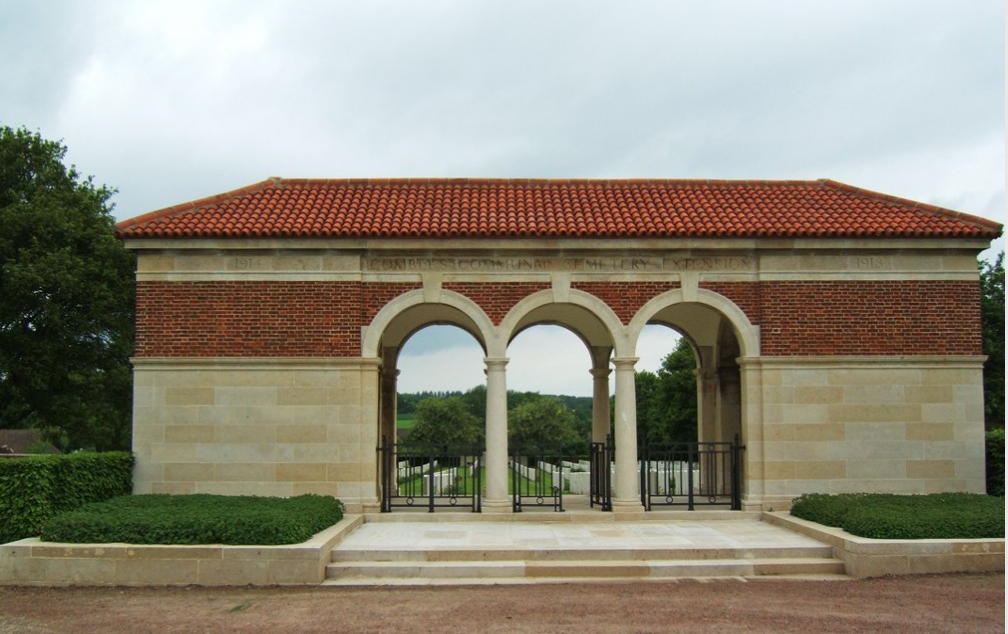Fallen in August 1918:
Walter Sydney Pratt
Ernest Robbins
Charles Edgar Wykes
Harold George Dyer
Thomas Valentine Lambert
James Herbert Reginald Lendrum
William Batchelor M.M.
William Kelly
Herbert Charles Cutler
WALTER SYDNEY PRATT
78830 Private
11th Bn., Royal Fusiliers
Killed in Action, 7th August 1918
Remembered with Honour, Beacon Cemetery, Sailly-Laurette , Somme, France, Grave III. G. 2.
Walter Sydney Pratt, known as Sydney, was born in Hemel Hempstead, Hertfordshire in December 1899, the fourth child and second son of Sydney Pratt and Eleanor Nockles. Sydney and Eleanor had six children together who were, Edith Eliza, William Andrew, Linda Florence, Walter Sydney, Harold and Alice Maud.
The family lived at 71, Cotterells Road (now Cotterells) in Hemel Hempstead, where all the children were born and where Sydney Snr. carried on his trade as a “Boot and Shoe Repairer”. Indeed the Pratt family had lived on the same road for many years, where young Sidney’s grandfather Andrew, also a “Boot Maker”, lived next door.
Sydney’s mother Eleanor was a native of Hackney in London and she too was employed in the boot and shoe trade as a “Machinist”. The women's and children's boot and shoe trade had developed throughout Hackney, Bethnal Green, and Spitalfields, in the 1880s, both in large manufactories and small workshops, and women and girls were employed chiefly in making the tops or uppers of boots and shoes.
It is not known how Sydney Snr. and Eleanor met and it may have been that he went to work in the area in the early 1890s. However the meeting happened, they became sweethearts and married in Shoreditch, London in 1893 and straightaway moved to Hemel Hempstead and Cotterells Road.
By 1911, the family had moved to Harpenden and lived at 17, Newcombe Street and sometime during the next few years they moved once again, this time to 18, Copsewood Road, Watford. It was from here that young Sydney left to volunteer as soon as he reached his eighteenth birthday in December 1917.
Following his basic training he was sent overseas on the 11th June 1918 and posted to the East Surrey Regiment. Just a month later he was transferred to the 11th (Service) Battalion Royal Fusiliers (City of London Regiment) under the orders of the 18th (Eastern) Division in the 54th Brigade.
Sydney joined his new comrades as part of a draft of eleven Officers and 120 Other Ranks on 30th July and was immediately in the trenches as preparations progressed for a major offensive in early August. This was the Battle of Amiens the opening phase of the Allied offensive which would ultimately lead to the end of the Great War. As the battalion moved into position, the trench system at the assembly lines was attacked briefly by the Germans and it was during this assault that Sydney was killed.
Sydney died on Wednesday, 7th August 1918 having arrived in France only eight weeks earlier and having been in the frontline for less than a week.
He is Remembered with Honour in the Beacon Cemetery, Sailly-Laurette, Somme, France, where he is interred in Grave III. G. 2. The inscription on his headstone, requested by his mother Eleanor, reads: “FROM ALL HIS LABOURS NOW HE RESTS IN GOD'S ETERNAL GLORY BLEST”.
He was only 18 years old when he died.
Sydney was eligible for the British War Medal or the Allied Victory Medal .
Cotterells Road (now Cotterells) Hemel Hempstead where Sydney was born (Photo: Public Domain)
Boot making was the Pratt family trade (Photo: Northampton Museums and Art Gallery)
Aftermath of the Battle of Amiens where Sydney was killed (Photo: https://www.reddit.com/r/TheGreatWarChannel)
Sydney’s Headstone in Beacon Cemetery, Sailly-Laurette, Somme, France (Photo: Traquair Photography)
ERNEST ROBBINS
37128 Serjeant
12th Bn., Somerset Light Infantry
Killed in Action, Monday, 12th August 1918
Remembered with Honour, St. Venant-Robecq Road British Cemetery, Robecq, France, Grave IV. B. 18.
Ernest Henry Robbins was born in Leighton Buzzard, Bedfordshire in 1882 the seventh child of George Robbins and Ruth Sinfield who had a total of eight children together. The children were Elizabeth, Caroline Louisa, Clara, Hannah, Sarah Jane, Levi, Ernest Henry and George. Ernest’s mother Ruth died in 1901 aged fifty-seven, his father George in 1913 aged seventy-one.
Ernest’s father George was a an “Agricultural Labourer and Shepherd”, whilst his mother Ruth was a “Straw Plaiter”. When Ernest was born, his family lived on Billington Road in Leighton Buzzard but by 1891 George and Ruth had moved to Leavesden, Hertfordshire and lived on Gammons Farm Lane and all the children except Ernest and his younger brother George had left home. By the time of the next Census in 1901 the family lived at “Shaffords” or “Boggy Bottom” in Nash Mills near Apsley, where only Ernest and his sister Caroline were at home with their widowed father.
When Ernest had left school in 1895, he had gone straight to work in Nash Mills for John Dickinson & Co., Ltd., as a “Paper Maker’s Assistant” and by the time war broke out in 1914 he had completed is apprenticeship and was a fully-fledged “Paper Maker.”
He volunteered a month after War broke out in September 1914 when he went to Watford to attest, joined the Bedfordshire Regiment, and was posted for training. He was promoted during this period and became a full Sergeant in 1915 before he was posted to the 2nd Battalion East Surrey Regiment which was preparing to transfer overseas. Ernest sailed with his new battalion in October 1915 and landed in Egypt in November before moving to Salonika on the 1st December.
He spent the next two-and-a-half years in the Struma valley fighting in the Salonika campaign. Between 1915 and 1918, British troops were part of a multi-national Allied force fighting against the Bulgarians and their allies in the Balkans. Although disease and the harsh conditions took a heavy toll, they eventually brought the campaign to a successful conclusion.
Ernest was again promoted Sergeant during his time in Greece and when the 12th (West Somerset Yeomanry) Battalion, Somerset Light Infantry was formed at Ismailia in Egypt in January 1917, he was transferred to this new unit. The 12th Somersets came under orders of the 229th Brigade in the 74th (Yeomanry) Division and on the 30 April 1918 it embarked at Alexandria for Marseilles, landing there on the 7th May.
In July 1918 the 12th Somersets went into the line for the first time and for the last ten days of the month performed repeated reconnaissance patrols to ascertain enemy positions and strength. On the 8th August the battalion relived the 16th Devonshire Yeomanry in the front line and over the next two days fought to gain objectives held by the Germans. Relieved on the 10th the battalion set to work consolidating the reserve positions and it was during this time that Ernest fell.
The reserve trenches were not out of reach of enemy shells or sniping and the Battalion War Diaries recorded casualties on most days when work was in progress. On the 12th it says: ”Working party of 1 Off and 50 OR at P23D 8’4. Casualties killed 5 O.R. wounded 4 O.R.”
Sadly, Ernest was one of the men killed and he died on Monday, 12th August 1918.
Shortly after his death a report appeared in the Hemel Gazette with sympathy and compliments from his platoon Captain and Corporal. (see extract)
Ernest was commemorated on the John Dickinson & Co., Limited war Memorial and on the War Memorial Plaque in St. Mary’s Church, Apsley End.
He is Remembered with Honour in the St. Venant-Robecq Road British Cemetery, Robecq, France, where he is interred in Grave IV. B. 18.The inscription on his headstone, requested by his brother Levi, reads: “HE FOUGHT THE FIGHT THE VICTORY WON AND ENTERED INTO REST.”
He was 36 years old when he died.
Ernest was eligible for the British War Medal or the Allied Victory Medal.
Leighton Buzzard where Ernest was born and spent his early years (Photo: https://www.parishmouse.co.uk)
Nash Mills in 1900 where Ernest worked (Photo: https://www.nash-house.com)
2nd Battalion East Surreys trench digging in Salonika 1916 (Photo: © IWM Q 31842 https://www.iwm.org.uk )
Extract from The Hertfordshire, Hemel Hempstead Gazette and West Herts Advertiser 14th Sep.1918
St. Venant-Robecq Road British Cemetery, Robecq, France (Photo: CWGC)
CHARLES EDGAR WYKES
Lieutenant
Royal Air Force
Died of Injuries, Tuesday, 13th August 1918
Remembered with Honour, Hemel Hempstead (Heath Lane) Cemetery, United Kingdom, Grave MA. 12.
Charles Edgar Wykes was born on Sunday, 12th December 1886 in Hemel Hempstead, Hertfordshire and baptised on Sunday, 20th March 1887 at St. Paul’s Church in the town. Charles was the child of Thomas Wykes and Alice Wells who had six children together, these were Leonard Graveney, Ernest William, Sydney Herbert, Arthur Edward, Charles Edgar and the youngest boy Ronald Arthur.
Tragedy struck the family first in 1892 when both Sydney and Arthur succumbed to measles aged only four and one respectively. Ernest died in 1917 aged thirty-one in Penticton, British Columbia, Canada, which meant that following Charles’ death in 1918, only two of Thomas and Alice’s six boys were left alive.
Ernest had emigrated in 1911 and worked as a “Railway Clerk” and on his death he left a widow Daisy and two children, Alice and Winifred.
Charles’ father Thomas had original trained and worked as a “Carpenter, whilst his mother Alice was a “dressmaker”. By the time of the 1901 Census, both Thomas and Alice were recorded as “Dressmakers” and went on to build a successful drapery business from their home on Westview Road in Hemel.
As their business grew and their wealth increased they moved into a substantial residence called “Iddesleigh" which stood on Westview Road where 61, Alexandra Road is situated today. Their next-door neighbours on Westview Road where the Christmas family, whose son Herbert was also killed in the Great War, indeed his death was officially confirmed only a few weeks after Charles was buried.
The Wykes boys, Leonard, Ernest, Charles and Ronald grew up at “Iddesleigh” and all four attended Watford Grammar School after completing their primary education in Hemel Hempstead.
Charles entered Watford Grammar on the 5th February 1900 when he was thirteen years old left in 1905 to go to the University of London to train as an “Accountant”. Whilst up at university he was awarded the Accountancy Prize and when he graduated in 1908, he joined the National Bank of India (NBI) at 26, Bishopgate in London, directly opposite the Bank of England and Charles remained employed at NBI until he joined the Royal Flying Corps.
Whilst growing up in Hemel Hempstead, Charles had met Mabel Christine Parsons, the daughter of Alfred John Parson, a “Professor of Music” who lived not far away on Marlowes. Charles and Mabel subsequently became sweethearts and married in London in 1915. They took their vows on Saturday, 22nd May at St. Mark, Myddleton Square, Clerkenwell in London, close to where Mabel was working as a “School Mistress”.
Charles left his job at the beginning of 1917 when he applied for a commission with the Royal Flying Corps and he was “Gazetted” on the 9th March, a few weeks after enlistment, as Probationary 2nd Lieutenant. He was confirmed in the rank three months later and posted to No. 2 Stores Distributing Park Camp, Newcastle-upon-Tyne to take up his duties.
For the next ten months he gained broad experience in his role and he was promoted Lieutenant on the 1st April 1918, but less than four months later and only three months before the end of the war, Charles was tragically killed. Fire broke out at the stores depot where he was based, and Charles was badly burned in the conflagration.
He died as a result of his injuries on 13th August 1918. Charles’ body was brought home to Hemel Hempstead and he was buried in Heath Lane Cemetery on Monday, 19th August 1918.
Mabel remarried after Charles died and had a son Aubrey Paine who also went into banking and worked in the Bank of England.
Charles was commemorated on the War Memorial Plaque in St. Paul’s Church on Queen Street where he had been baptised. Sadly, this plaque was lost when the church was closed in 1961. It has been replaced by a Memorial Scroll now held in the new St. Paul’s Church in Highfield. He is also commemorated on the War Memorial Plaque in St. Mary’s Church in Hemel Hempstead Old Town.
He was also commemorated on the War Memorial Plaque in Watford Grammar School.
He is Remembered with Honour in the Hemel Hempstead (Heath Lane) Cemetery, United Kingdom, where he is interred in Grave MA. 12.
He was 31 years old when he died.
Charles was eligible for the British War Medal or the Allied Victory Medal.
“Iddesleigh" today, the house where Charles grew up (Photo: Traquair Photography)
Central Primary School, Watford the original Grammar School (Photo: Traquair Photography)
St. Mark's Church, Myddleton Square, London where Charles and Mabel married in 1915 (Photo: https://www.ebay.co.uk/itm/391966405228)
R. St. Mary's and L. St. Paul's War Memorials (Photos: Traquair Photography)
Lt. Charles Edgar Wykes grave, Heath Lane Cemetery, Hemel Hempstead (Photo: Traquair Photography)
HAROLD GEORGE DYER
242084 Private
2/5th Bn., Lincolnshire Regiment
Died of Illness, Thursday, 15th August 1918
Remembered with Honour, Cologne Southern Cemetery, Germany, Grave XVII. B. 14.
Harold George Dyer was born in Hemel Hempstead, Hertfordshire in the summer of 1893 the oldest child of George Dyer and Charlotte Howse. He had three siblings who were his sisters Hilda May and Charlotte Winifred and one other little sister or brother who is unknown but sadly died shortly after birth.
When Harold was born his parents lived at “Laurel Bank” on South Hill Road and he grew up there with both his sisters, until the family moved to 3, Queen Street just as he and his sister left school. Harold went straight into John Dickinson & Co., Limited at Apsley Mills as an “Clerk” in the Envelope Department, while his sister Hilda trained as a “Milliner”. Their mother Charlotte ran a “General Store” on Queen Street and their father George was a “Carpenter” in the building trade.
This business appears to have been very successful and on his death in November 1926 George left an estate worth £28,000, the equivalent in today’s money of £1.2 million.
Harold was called up for service following the passing of the Military Services Act in January 1916 and in April he attested and joined the Army. He was mobilised in October and posted to the 2/5th Battalion Lincolnshire Regiment at St. Albans or Luton for basic training. When his training was complete he was sent overseas with his unit which sailed from Southampton on the 23rd February 1917 and landed at Le Havre the following day.
By the end of the month Harold was in billets at Bayonvillers to the east of Amiens and the 2/5th Battalion was under the orders of the 59th Division. On the night of the 13th March the 2/5th Lincolns had taken their place in the line, occupying a group of dug-outs in Triangle Wood, but the Germans began a planned retreat to the Hindenburg Line on the 17th, and the poorly trained 59th had to follow up, patrolling and repairing roads.
On the 11th April the 2/5th Bn was ordered to make an immediate attack on 'The Quarry' and 'Cologne Farm' near Hargicourt, which the enemy were reported to be leaving. The attack was made at 04:30, but the report was false and the positions were strongly held. The battalion was forced back with very heavy casualties (260 killed, wounded and missing). A and C Companies, which had led the attack and suffered worst, had to be temporarily formed into a single composite company.
There followed some weeks of trench duty in front of the Hindenburg Line, followed by intense training through the summer. In September and October 1917, Harold fought in the Battles of Polygon Wood and the Battle of Cambrai, both successful operations for the 2/5th Lincolns and he survived these actions.
In 1918, the German Spring Offensive opened on the 21st March while the 59th Division was in the Bullecourt sector of the line orders came for an advance across country in artillery formation to take up positions in the support line. At noon the 2/5th Lincolns was ordered to occupy the second line trenches, but found that the enemy had overrun the Sherwood Foresters in the morning mist and was already in the second line. Before the battalion could extend its line, three companies were cut off at Noreuil and were never seen again: forty-nine men were killed, and all the rest were captured. Harold was among the prisoners.
He was taken along with his comrades to a German prisoner of war camp, specifically Camp II Munster which was situated at a racecourse. He had been wounded during the fighting and received medical attention after arriving at the camp and made a recovery of sorts.
His state of health was poor and after four months at Munster he contracted pleurisy and deteriorated very quickly and sadly died on Thursday, 15th August 1918 of his illness. This was only three months before the end of the Great War.
A detailed account of events leading to his demise was published in the Hemel Gazette and described how Harold had written home cheerfully just before his rapid decline. His parents received his letter but just two days later official confirmation of Harold's death arrived, cruelly dashing their hopes of seeing their son return home safely.
His fellow prisoners arranged for the funeral bouquet ribbons to be sent to Harold’s parents along with a photograph of his resting place.
Harold was commemorated on the War Memorial Plaque in St. Mary’s Church, High Street in Hemel Hempstead Old Town.
He is Remembered with Honour in the Cologne Southern Cemetery, Germany, where he is interred in Grave XVII. B. 14.
He was 25 years old when he died.
Harold was eligible for the British War Medal or the Allied Victory Medal.
Pte. Harold George Dyer (Photo: The Hertfordshire, Hemel Hempstead Gazette and West Herts Advertiser)
Camp II Munster, the German POW camp where Harold died (Photo: Public Domain)
Extract from The Hertfordshire, Hemel Hempstead Gazette and West Herts Advertiser 26th Oct. 1918
Extract from The Hertfordshire, Hemel Hempstead Gazette and West Herts Advertiser 19th Oct. 1918
St. Mary's War Memorial Plaque (Photo: Traquair Photography)
Cologne Southern Cemetery, Germany (Photo: CWGC)
THOMAS VALENTINE LAMBERT
Sergeant
51st Bn., Queen’s (Royal West Surrey) Regiment
Died of Illness Sunday, 18th August 1918
Remembered with Honour, All Saints Churchyard, Kings Langley, United Kingdom
Thomas Valentine Lambert was born in Abbots Langley, Hertfordshire in March 1898 and baptised on Wednesday, 20th September 1899 at All Saints Church, Kings Langley. He was the third child of Herbert John Lambert and Mary Ann Jelly who had seven children together who were Florence Mary Hanson, Edith Elizabeth, Thomas Valentine, John Herbert and Phyllis Kate, Frances Norah and Alfred Dennis.
Thomas’ father Herbert was a “Bricklayer” by trade and had come to Abbots Langley from Bishop Stortford, his hometown, via London where he had met and married Mary and where Thomas’ two older sisters were born. His mother Mary was a native of Althorp in Northamptonshire and in 1901 her mother and two of her brothers’ William and James were also living with the family at Railway Terrace in the village.
William Jelly was also killed on active service on the 18th March 1917, fighting in the 5th Battalion King’s (Shropshire Light Infantry).
Thomas completed his education in 1911 and went to work for John Dickinson & Co., Limited in the “Stamping Room” in Apsley Mills. He described himself as a “Layer On” when he enlisted, which was a specific part of the paper making process.
On the outbreak of war, Thomas was too young at sixteen to volunteer, but undeterred, he travelled to St. Albans where he attested on the 26th October and claimed to have been born in August 1895, making him “nineteen” and therefore old enough for immediate overseas service. He was tall for the time and for his age at five feet nine inches and physically well developed, so it is perhaps not surprising that he was accepted for enlistment.
He joined the Bedfordshire Regiment and was posted for basic training to the 8th Battalion and assigned to “C” Company. He went first to Bedford and then briefly to Brighton when the Battalion moved there, before undertaking most of most of his training in Surrey, with almost seven months being spent in the sprawling New Army training area around Woking.
The increasingly restless men of the “Hungry 8th”, as it became known, received orders to mobilise and prepared to ship out and departing Dover on the 29th August 1915 disembarking the following morning at Boulogne. Thomas followed just over a month later on the 4th October joining his unit at Vlamertinghe, west of Ypres four days later, as part of a draft of 115 men.
During the next three months he saw action in the trenches until the 3rd January 1916 when he was taken out of the line, evacuated to England and admitted to London General Hospital, Denmark Hill, suffering from “Trench Foot”. This condition was a common occurrence amongst soldiers in the cold, wet conditions of the trenches and began with itching, progressing to numbness and could lead to infection. It is estimated that over 75,000 British soldiers died as a result of “Trench Foot” in the Great War.
Thomas was treated in hospital for three weeks before being discharged and sent to a base depot to await posting. This occurred in February 1916 when he was sent to the 10th Battalion Bedfordshire Regiment, a “Reserve” battalion based at Dovercourt, Harwich on coastal defence duties.
He was sent overseas again on the 1st September 1916, posted initially to the 28th Battalion Queen’s (Royal West Surrey) Regiment, before being transferred to the 51st Battalion Queen’s. In 1917 he received a series of promotions, first to Lance Corporal in February and then to Corporal two months later with full pay backdated to October 1916.
On discharge, Thomas was described as being of “Very Good” character and “Found to be sober, honest, intelligent and trustworthy”. Admirable characteristics given his very young age and explains his eventual promotion to Sergeant in March 1918. His obvious abilities also marked him out for other responsibilities and in December 1917, he qualified as the Regiment’s Anti-Gas Instructor.
However, despite his progression as a soldier and N.C.O., Thomas was suffering from serious illness which finally manifested itself in May 1918, when he was admitted to a Field Ambulance at the end of the month feeling unwell.
After two days of treatment he was once again evacuated to England, where he was transferred to the Eastern General Hospital, Cambridge, where he was to remain for the next seventy-seven days. During this time in hospital he was diagnosed with “Diabetes Mellitus” which tragically, before the discovery of “insulin” in 1926, condemned sufferers to very short lives.
Before “insulin”, patients with diabetes could only be treated by diet which was very restricted and unpalatable and often based on extremely low calorific intake which inevitably exacerbated the condition. Thomas’ case was reviewed by the Army Medical Board at the end of July 1918 and the decision was reached that he should be permanently discharged from the Army as “…no longer fit for war service.”
He was formally discharged and released from hospital on 13th August 1918 and travelled back to his parent’s home at 8 East View, London Road in Boxmoor. Sadly, his time there was very short and only five days later, Thomas died of his illness on Sunday, 18th August 1918.
The Medical Board had determined that Thomas’ death was “Neither due to nor aggravated by service during war with Germany” leaving no room for doubt. The result of this decision meant that no war pension was awarded for Thomas and more cruelly perhaps, meant that he is not officially recognised as a victim of the Great War.
This was not unusual when a soldier was discharged and died of illness, but in Thomas’ case it seems particularly callous. He had lied about his age in his determination to enlist and “Do his bit”, as well as proving to be a model soldier capable of taking responsibility, for which has rank attests. In all he served for just under four years suffering privations which may indeed have exacerbated his illness, but it seems from his records that despite his condition, he continued to do his duty to the best of his ability.
Despite the lack of official acknowledgement of his sacrifice, he is commemorated on the John Dickinson & Co., Limited War Memorial at Apsley End.
Thomas is Remembered with Honour in All Saints Churchyard, Kings Langley, Hertfordshire where he had been baptised and worshipped.
He was only 20 years old when he died.
Thomas was entitled to the 1914-15 Star, the British War Medal and the Allied Victory Medal and was awarded a Silver War Badge on his discharge from the services.
Sergt. Thomas Lambert (Image: The Hertfordshire, Hemel Hempstead Gazette and West Herts Advertiser)
London General Hospital, Denmark Hill where Thomas was treated for "Trench Foot" (Photo: https://www.worthpoint.com)
The Eastern General Hospital, Cambridge where Thomas spent seventy-seven days before his discharge (Image: https://www.cam.ac.uk)
The record of Thomas' discharge from the Army (Image: The National Archives)
John Dickinson War Memorial, Apsley End (Photo: Traquair Photography)
All Saints Church, Kings Langley, 1920 shortly after Thomas was buried in the churchyard (Photo: Herts Archives)
THE REV. JAMES HERBERT REGINALD LENDRUM
Chaplain 4th Class
Army Chaplains’ Department
Killed in Action Thursday, 22nd August 1918
Remembered with Honour, Benvillers Military Cemetery, Bienvillers-au-Bois, Pas-de-Calais, France, Grave XIX. E. 14.
James Herbert Reginald Lendrum was born on Monday, 8th November 1886 in St. Mary, Hornsey, Middlesex and baptised on Sunday, 16th September 1894 at Crouch End Christ Church in Hornsey. He was the sixth of seven children born to Robert Samuel Lendrum and Clara Soanes and his siblings were, Ernest Samuel Soanes, Wilfred Joseph, Violet Ethel, Clara Maud, Frank Soanes and Catherine Emma Lilian. His mother Clara died in 1908 aged fifty-seven.
James’ father Robert was a “Civil Servant” with the Board of Trade and when James was born the family lived at 46, May Crest, Islington, Middlesex and by 1901 they had relocated to nearby Cecile Park and a much larger home.
James was schooled in Hornsey and went up to University College London in 1906 graduating Bachelor of Arts (Initial Teacher Training) in 1909. He then moved to Luton to take up a position as a “Secondary School Teacher” with Bedfordshire County Council and by 1911 he was lodging with John and Elizabeth Sillick at 128 Dunstable Road in the town.
By this time James had already met his future wife, Eleanor Mary Yates, and in the Spring of 1911 they married in Barnet, Middlesex and moved into 141, Tennyson Road in Luton. Their first child, a daughter Margaret, was born there in April 1912. By the time of Margaret’s birth, James had decided to leave teaching and enter the Anglican Ministry to train as a Priest.
It was his appointment to the position of “Curate” that brought him to Apsley and St. Mary’s Church under the tutelage of the Rev. F. O. Houseman. A year after arriving with Eleanor and Margaret, a son John Frederick was born in February 1914. The family was completed with the arrival of a third child, Herbert Colin in November 1916.
James took a very active part in the life of Apsley Parish and soon became a popular and well-respected figure in the community. This included his involvement in sports and particularly football and St. Mary’s F.C., the team closely associated with the Church and he often refereed local matches. He is shown in the attached photograph of the team taken not long after he arrived in Apsley, along with Alfred Burtt and Bert Rodwell, recipient of the Military Medal, who also fought and died in the Great War. Both men’s biographies are on this site.
Following the outbreak of war, and the formation of Hemel Hempstead Volunteer Force, James was one of the early members and remained so until he enlisted and went to war. Before that event however, the Vicar, F. O. Houseman volunteered and left the parish in the capable hands of the young Curate which he managed for around eighteen months. As a result of his work he was publicly praised on the Vicar’s return who wrote in the Parish Magazine in December 1916, that James had “made a name for himself in the diocese”.
Following the passing of the Military Services Act in 1916, James decided that his abilities would be better used in the service of his country, even though there was no obligation for him to volunteer. He made his application to the Bishop with the support of the Vicar and in May 1917 he left Apsley to join the Army Chaplains’ Department. He was gazetted a Chaplain 4th Class which equates to the rank of Captain.
His departure was marked by the parishioners many of whom contributed to a parting gift for James in the form of “…a portfolio, an electric torch, with a supply of refills, a most substantially made jack-knife, a multi-bladed pocket knife, and a very handsome fountain pen.”
He travelled to Nottinghamshire and a camp in Worksop, where he was to be based for a number of months before going overseas in November 1917 and attached to the 8th Battalion King’s Own Lancaster Regiment. He then spent the next nine months near the frontline as the unit fought in many of the most significant allied actions, including the First Battles of the Somme 1918, the Battles of the Lys and the Battle of Albert.
Aside from ministering to the men and comforting the dying, James conducted burial services and clearly put himself in harms way to assist his comrades. Reports of his death in the Hemel Gazette state that he along with three other men was killed by a shell while carrying out a burial. However, the Battalion War Diaries recorded his demise differently. “22/8/18 Day hot and fine Bn in MOUBLAIN TRENCH BHQ in AERODROME TRENCH W of COURCELLES C of E Padre Capt Lendrum (CF) killed by shell while bringing in bodies of men killed in COURCELLES…”
James was killed on Thursday, 22nd August 1918.
Over 5000 men served as Chaplains in the war and of these 179 died during the conflict. In recognition of their devoted work since 1914 King George V conferred the prefix ’Royal’ on the Army Chaplains’ Department in 1919.
Following his death an obituary was published in the Hemel Gazette in late August 1918. (see extract)
His wife Eleanor remarried in 1923 to Percy Calder Tomson a “Newspaper Proprietor” in St. Neots where she moved with the children.
James was commemorated on the Army Chaplains Memorial at Aldershot and on the War Memorial Plaque in St. Mary’s Church Apsley End. A personal remembrance plaque was also installed in the Church.
James is Remembered with Honour in Benvillers Military Cemetery, Bienvillers-au-Bois, Pas-de-Calais, France, where he is interred in Grave XIX. E. 14. The inscription on his headstone, requested by his wife Eleanor, reads: “UNITED IN TIME PARTED IN TIME TO BE REUNITED WHEN TIME SHALL BE NO MORE”
He was 31 years old when he died.
James was entitled to the British War Medal and the Allied Victory Medal.
Rev. James Lendrum 1913 (Photo: Peter Ward Collection)
The Lendrum family home in Cecile Park, London (Photo: Traquair Photography)
St. Mary's Apsley End where James was Curate (Photo: http://www.hertfordshire-genealogy.co.uk)
James with the St. Mary’s football team (Photo: Peter Ward Collection)
Extract from The Hertfordshire, Hemel Hempstead Gazette and West Herts Advertiser 31st Aug. 1918
Benvillers Military Cemetery, Bienvillers-au-Bois, Pas-de-Calais, France (Photo: CWGC)
WILLIAM BATCHELOR M.M.
14124 Serjeant
4th Bn., Bedfordshire Regiment
Killed in Action Tuesday, 27th August 1918
Remembered with Honour, Bagneux British Cemetery, Gezaincourt, Pas de Calais, France, Grave IV. G. 29.
William Batchelor was born on 3rd September 1894 and baptised exactly one month later on 3rd October at St. Mary’s Church on the High Street in Hemel Hempstead. He was the youngest of eleven children born to Richard Batchelor and Caroline Austin. William’s siblings were Walter, Leonard, Alfred, Annie, Frederick Daniel, Harold, Charley, Herbert and Arthur. Frederick died in 1896 aged twelve, Walter died in 1903 aged twenty-nine and one other unnamed child in infancy.
One of his older brothers, Harold was killed in the War in April 1915 and his biography also appears on this site. His brother Charley also saw active service and survived the conflict.
The family lived at 6 Boxted Cottages, Boxted just to the west of Hemel Hempstead, when William was born, a farming area much as it is today, and his father and older brothers were working on the land. His father Richard died in 1898, leaving Caroline to raise the family alone and in 1901 the census return records that she was a “Charwoman occasionally”. However, four of her sons were working on nearby farms as Agricultural Labourers.
William finished his schooling in 1907 and followed his brothers onto the land as a “Farm Labourer” which was still his occupation on the outbreak of War in August 1914. Following the declaration, William immediately went to volunteer and enlisted with the Bedfordshire Regiment at the end of August, following which he was sent for basic training. This was undertaken with the 4th Battalion at Felixstowe and seven months later, training completed, William was sent overseas.
On the 9th April 1915 he sailed for France having been posted to the 2nd Battalion Bedfords, and he arrived as part of a draft of seventy-seven men with his new unit on the 27th April. The following day he was on the move again as the Battalion set off, first to Strazeele, then Pont Duhem, arriving there on the 8th May. That night at midnight the Battalion went into dugouts near Aubers in reserve for the 8th Divisions attack on German trenches. Their position came under heavy shell fire and three men were wounded, one of which was William, hit in the shoulder by shrapnel.
He was taken out of the line and sent for treatment to his wounds, and as a result his life was probably spared. Just a week later the 2nd Battalion fought in the Battle of Festubert and suffered over 400 casualties, half the units fighting strength.
It is not clear when William returned to the frontlines, and there are two possible scenarios, dependent on the seriousness of his wounds. If they were not serious, he may have gone back to the 2nd Battalion as soon as the 19th June 1915, when the Battalion War Diaries recorded the arrival of “A draft of 56 other ranks…” many of whom were wounded men returning to their unit.
If his wounds were more serious he may have been evacuated back to England for treatment and rehabilitation and this may indeed be the reason he was subsequently posted to the 4th Battalion Bedfords with whom he served until his death.
This second scenario is the more likely and meant that William was posted to the 4th Battalion at Felixstowe on his recovery. The 4th Battalion was home based on coastal defence duties, but it also acted as a source of drafts for front line battalions, and it may have been that William was to be posted back to the 2nd Battalion. However, following the devastating losses at the Somme in 1916, the 4th Battalion was mobilised for overseas service and on the 26th July 1916, it landed in France.
Its and William’s first serious action came towards the end of the year at the Battle of Ancre in November where the cost of progress made was the loss of 194 men, killed, wounded or missing. William saw out the year with his comrades away from the front lines, marching and training.
February 1917 brought more action along with further casualties for the 4th Battalion when it lost over 200 men at Miraumont but William, by now a Lance Corporal, survived the engagement. He fought in the Second Battle of the Scarpe in late April and following a move with the Battalion into Belgium, he fought in the devastating Second Battle of Passchendaele at the end of October, where the 4th Bedfords lost a further 264 men.
Over the next five months the Battalion was reinforced and in March of the following year, William was in action once more when he fought in the First Battles of the Somme 1918, first at St. Quentin and the Bapaume. It was here during these actions that William performed an act of bravery which resulted in the award of the Military Medal. Although the details are not known, the Battalion War Diaries recorded that on the 14th April, William received the award along with four of his comrades. Not long after this he was promoted Corporal and by August he was a Serjeant.
The Second Battles of the Somme, specifically the Battle of Albert, began on the 21st August and for six days William fought alongside his comrades in what was the action which turned the tide of the war in favour of the Allies and led directly to victory and the Armistice only ten weeks later.
Tragically however, William did not to survive to see the end of the conflict as he fell on the last day of action at Albert. The Battalion War Diaries recorded the details and described the hard fighting including the heavy casualties inflicted by both enemy guns and Allied shells falling short during a creeping barrage. Ultimately the attack by the 4th Battalion failed and this was attributed to lack of support at critical points in the assault.
Initially William was posted “Missing” but was finally confirmed “Killed in Action” on Tuesday, 27th August 1918. To the time he fell, William had served his country in the Great War for almost four years to the day and died just seventy-four days before the war ended.
He was commemorated on the War Memorial Plaque in St. Mary’s Church on the High Street in Hemel Hempstead where he had been baptised.
William is Remembered with Honour in Bagneux British Cemetery, Gezaincourt, Pas de Calais, France, where he is interred in Grave IV. G. 29.
He was 23 years old when he died.
William was entitled to the 1914-15 Star, the British War Medal and the Allied Victory Medal.
Sgt. William Batchelor MM c1914 (Photo: Hertfordshire, Hemel Hempstead Gazette and West Herts Advertiser)
Landguard Fort, Felixstowe William's last home posting (Photo: http://www.starforts.com/landguard.html)
Serjeants of the 4th Bedfords September 1917 (Photo: http://bedfordregiment.org.uk/4thbn/4thbtnphotos1.html)
The Military Medal "For Bravery in the Field" (Photo: Public Domain)
The ruined town of Albert after the battle where William fell (Photo:https://www.meisterdrucke.uk)
St. Mary's Church, Hemel Hempstead War Memorial Plaque (Photo: Traquair Photography)
Bagneux British Cemetery, Gezaincourt, Pas de Calais, France (Photo: CWGC)
WILLIAM KELLY
33165 Private
4th Bn., Befordshire Regiment
Died of Wounds Wednesday, 28th August 1918
Remembered with Honour, Bagneux British Cemetery, Gezaincourt, Somme, France, Grave V. B. 31.
William Kelly was born in Whitechapel, Middlesex, London at the end of 1898 the oldest child born to William Kelly and Alice Emma Crawley. His mother was previously married to Byron Campbell and as a result, William had three older half-siblings who were, Katherine and Alice Campbell and Arthur Cook. His parents produced another child in who was named George Frederick, meaning Alice had five children in all.
William’s mother Alice had first married Byron Campbell in London in 1883, but sadly Byron died in 1891 followed a year later by their second child Alice. His mother then met William Cook and bore him a child Arthur, born in 1894, but again tragedy befell Alice when William Cook died in December eleven months after Arthur’s birth. William’s father William snr. now came on the scene and the last two children were born in 1896 and 1900.
There are no records of marriages between Alice and William Cook or William Kelly and indeed, William Kelly disappears from view by 1901 and does not return. As a result in the early 1900’s Alice returned to her native Hemel Hempstead and went to work in Apsley Mills for John Dickinson & Co., Ltd as a “Mill Hand”. Three of her children came to Hemel with her, Arthur, William and George who on the 1911 Census were recorded as Campbell.
Their mother Alice was always known as Campbell, giving further weight to the suggestion she did not marry either William Cook or William Kelly. On the Census return Alice also states that she had seven children in total of which three died, meaning that two other children not named on records were born at some point.
Arthur was always known by his Campbell surname whilst the two youngest boys William and George where always Kelly. The family lived at 3 Glenview Gardens, Hammerfield in Hemel Hempstead and this is where Alice died aged sixty-five in 1927, with her son Arthur present on his thirty-third birthday.
William finished his schooling in 1911 and went out to work following is half-brother Arthur into G. B. Kent and Sons Ltd. at the Apsley Brush Works. He remained there until he went to volunteer when he reached his eighteenth birthday and was old enough to join the Colours.
He travelled to Bedford to attest and joined the Bedfordshire Regiment and was posted for basic training. When he went overseas at the end of 1917 he was posted to the 4th Battalion Bedfords. His first serious action came in March the following year when he fought in the opening engagements of the First Battles of the Somme 1918, at St. Quentin and Bapaume when the battalion suffered very heavy casualties.
After a period of rebuilding the fighting strength of the unit, William fought in the Battle of Albert between the 21st and 27th August and it was during this engagement that he was mortally wounded. He was taken out of the line to a Casualty Clearing Station, but nothing could be done, and he sadly succumbed to his injuries.
William died of his wounds at 56 Casualty Clearing Station on Wednesday, 28th August 1918.
He was commemorated on the War Memorial Plaque in St Francis of Assisi Church just opposite on the street where the family lived, and on the War Memorial Plaque in the church of St. John the Evangelist in Boxmoor. He was also commemorated on the War Memorial Plaque in G. B. Kent and Sons Ltd. where he worked before going to war.
William is Remembered with Honour in Bagneux British Cemetery, Gezaincourt, Somme, France, where he is interred in Grave V. B. 31. The inscription on his headstone, requested by his mother Alice, reads: “GONE FROM OUR HOME BUT NOT FROM OUR HEARTS”
He was only 19 years old when he died.
William was entitled to the British War Medal and the Allied Victory Medal.
Pte. William Kelly c1917 (Photo: http://www.roll-of-honour.com/Hertfordshire/Boxmoor.html)
Glenview Road, Hammerfield, Hemel Hempstead where William grew up (Photo: Public Domain)
Kents Brushes where William worked (Photo: Public Domain)
Bagneux British Cemetery, Gezaincourt, Somme, France (Photo: CWGC)
HERBERT CHARLES CUTLER
G/68776 Private
The Queen’s (Royal West Surrey Regiment)
Killed in Action Friday, 30th August 1918
Remembered with Honour, Combles Communal Cemetery Extension, Somme, France, Grave II. D. 23.
Herbert Charles Cutler was born in the summer of 1899 in Hemel Hempstead, Hertfordshire the oldest child of Walter Herbert Cutler and Maria Rickett. Herbert had a younger sister Beryl Maria Maude and one other sibling who died in infancy.
Herbert’s father Walter was a “Compositor” who worked for John Dickinson & Co., Limited in Apsley Mills and when Herbert was born the family lived in Moor End, between Boxmoor and Hemel Hempstead in a house known as “Gade Villa” not far from the Heath Park Hotel. By the 1911 Census, the family had moved to 112 Marlowes a short distance from their old home and had a “Boarder”, Julia Fisher an “Assistant Teacher” in one of the Hemel schools.
When Herbert left school in 1912, he followed his father into Dickinsons at Apsley Mills and although too young to enlist on the outbreak of war, he joined the Hemel Hempstead Volunteer Force as soon as it was formed in 1916. He served in the Volunteers and continued to work in Apsley Mills until he was old enough to enlist for service. He did so at the start of 1918 and following completion of his basic training he was sent overseas.
He was posted to the 1/22nd London Regiment The Queen’s (Royal West Surreys) and although the exact date of his arrival is unknown it was probably around May of June of 1918 when the Battalion was at Laviéville to the west of Albert and in the frontline trenches.
In August, Herbert fought in the Battle of Albert which was significant in that it was the opening push in a series of actions which ultimately brought the war to a successful conclusion for the Allies. The fighting lasted for just two days but the Battalion suffering 199 casualties although thankfully, Herbert was not among them.
Six days later, instructions were received commanding the 1/22nd Battalion to move forward and assemble ready for another major assault, which it did with great difficulty and hindered by “…intense darkness and enemy shelling.”
At 5.30 am on the 30th August, the Battalion attacked in what was the last engagement of the Battle of Bapaume. The objective was achieved but again at the cost of many casualties and the Battalion War Diaries recorded the following: “…18th Division attacked on left at 5.30 but were compelled to withdraw from RANCOURT later with the result that a gap existed on the left flank and the Battn was held up by heavy machine gun fire from high ground…” It then records “Casualties approx. 3 off and 100 OR”
Herbert was one of the unfortunate men cut down by the enemy machine guns and he was Killed in Action on Friday, 30th August 1918, only ten short weeks before the Armistice.
A short announcement of his death was published in the Hemel Gazette just over a month after he was killed. (see extract)
Herbert was survived by his parents Walter and Maria and sister Beryl. Walter and Maria died just over a month apart in 1958 when they were both aged ninety-one, having been married for sixty-one years and known each other for over seventy.
Herbert was commemorated on the John Dickinson & Co. Limited War Memorial in Apsley End and on the War Memorial Plaque in the Methodist Church on Marlowes, Hemel Hempstead where he had worshipped.
He is Remembered with Honour in Combles Communal Cemetery Extension, Somme, France, where he is interred in Grave II. D. 23. The inscription on his headstone, requested by his father Walter, reads: “REMEMBERED IN LOVE BY FATHER, MOTHER AND SISTER BERYL”
Herbert was only 19 years old when he died.
He was entitled to the British War Medal and the Allied Victory Medal.
Moor End, Hemel Hempstead where Herbert was born (Photo: C.A. Patterson. Source ebay)
A Volunteer Force patrol in November 1915 (Photo: http://anextractofreflection.blogspot.com)
The devastated town of Bapaume the day after its capture and the day of Herbert's death (Photo: https://natlib.govt.nz/records/23153769)
Extract from The Hertfordshire, Hemel Hempstead Gazette and West Herts Advertiser 12th Oct. 1918
Marlowes Methodist Church War Memorial Plaque (Photo: Traquair Photography)
Combles Communal Cemetery Extension,Somme, France (Photo: CWGC)

